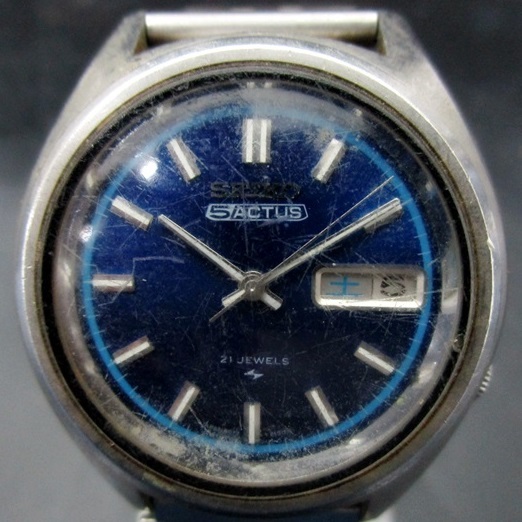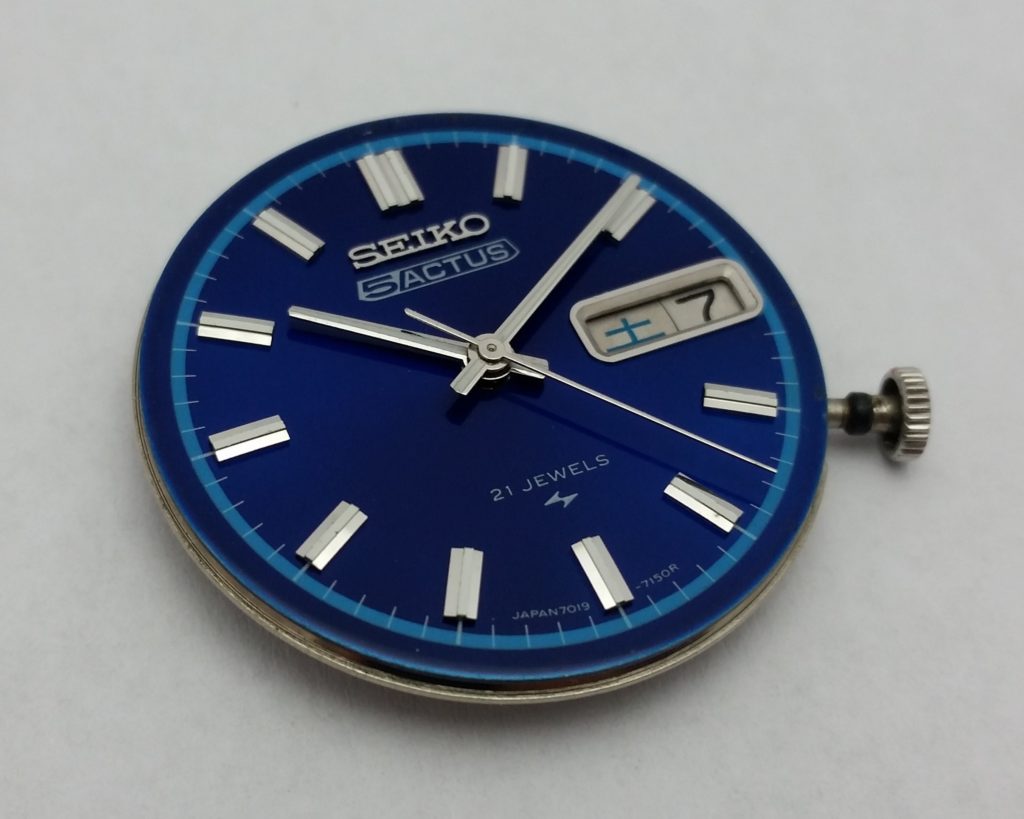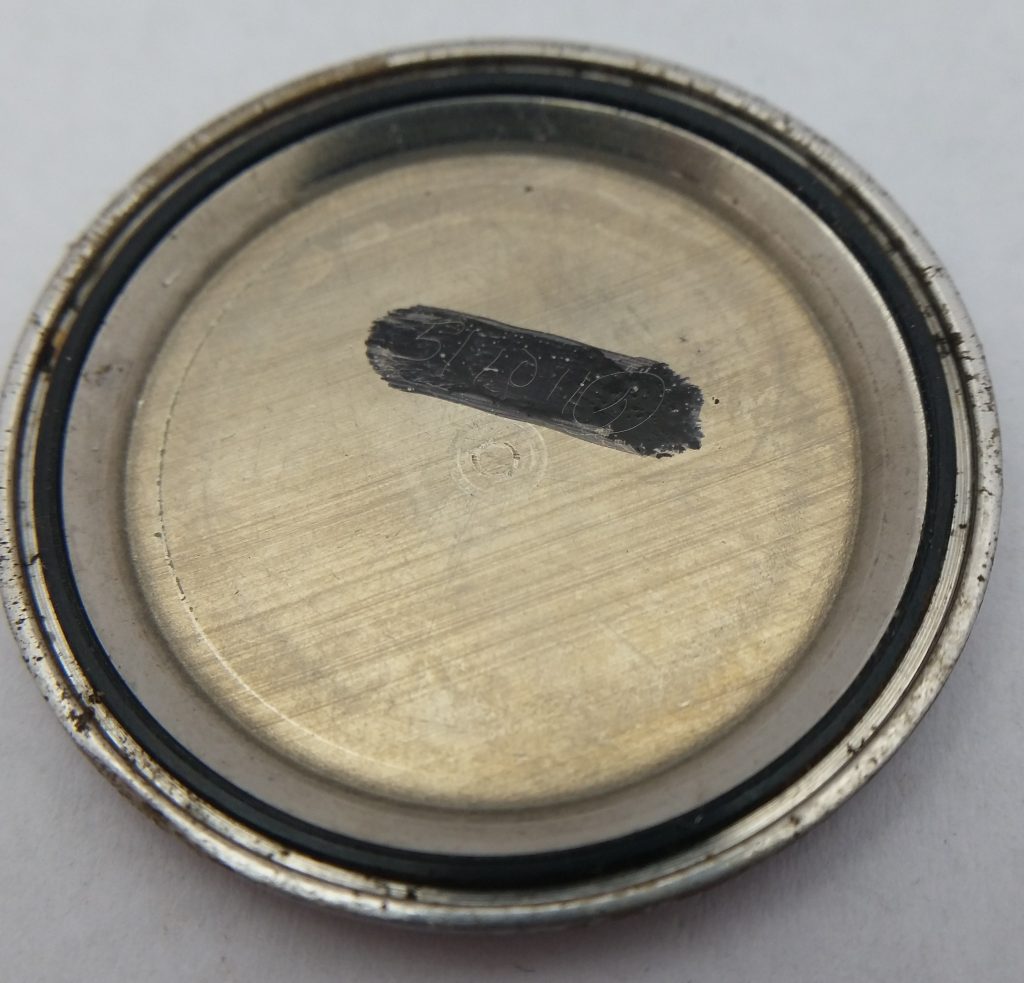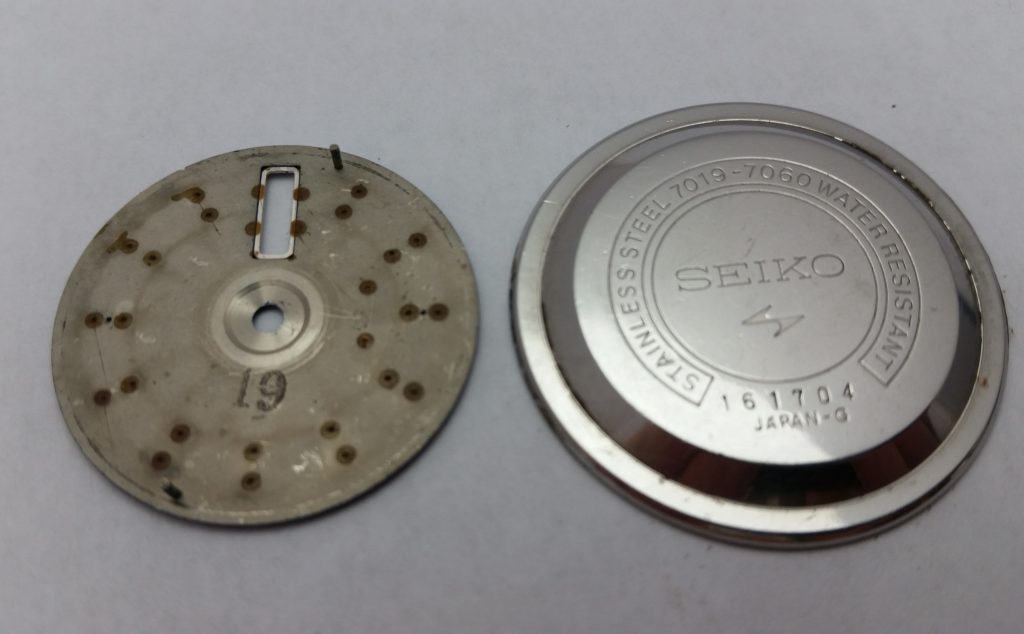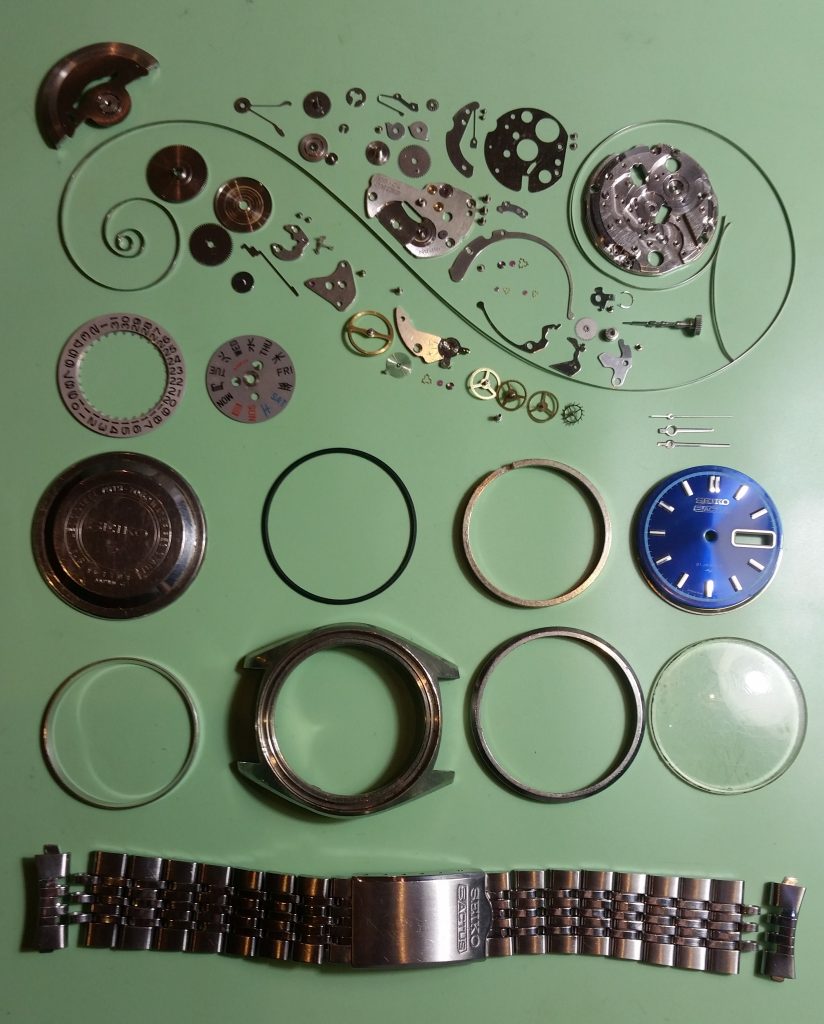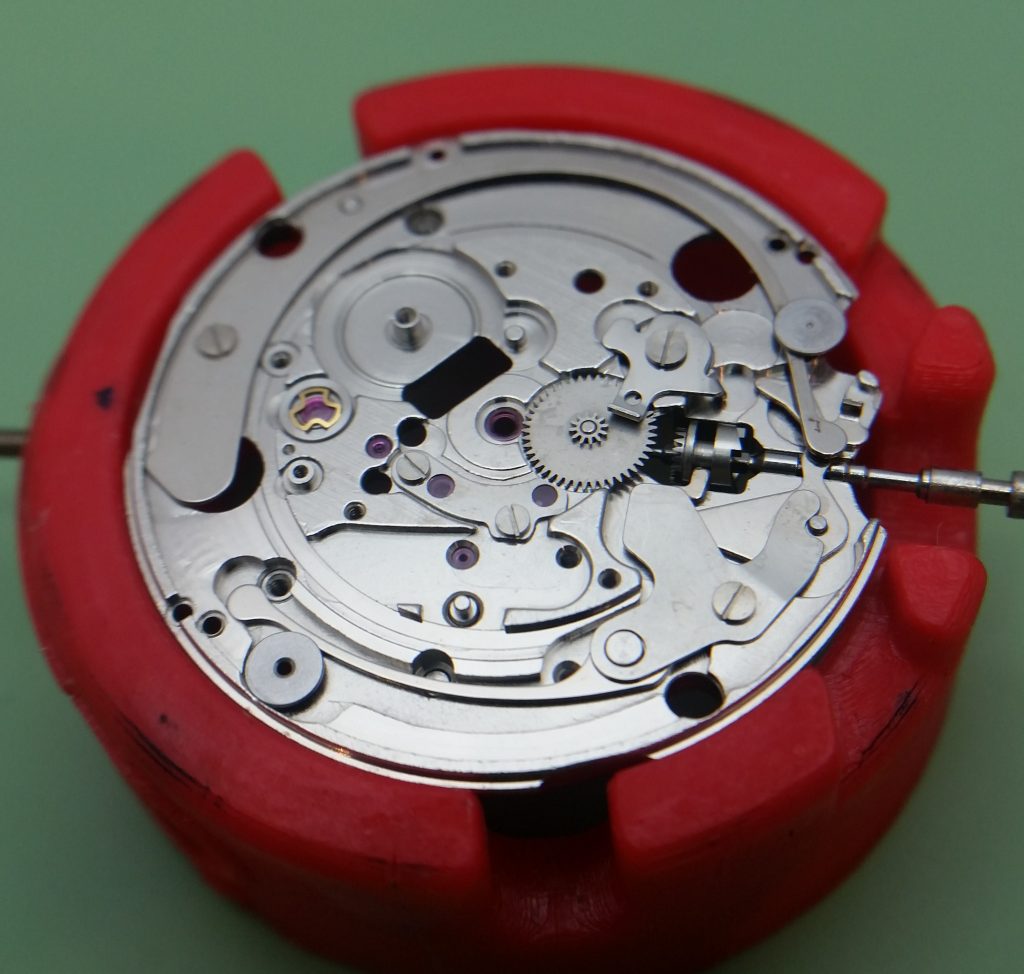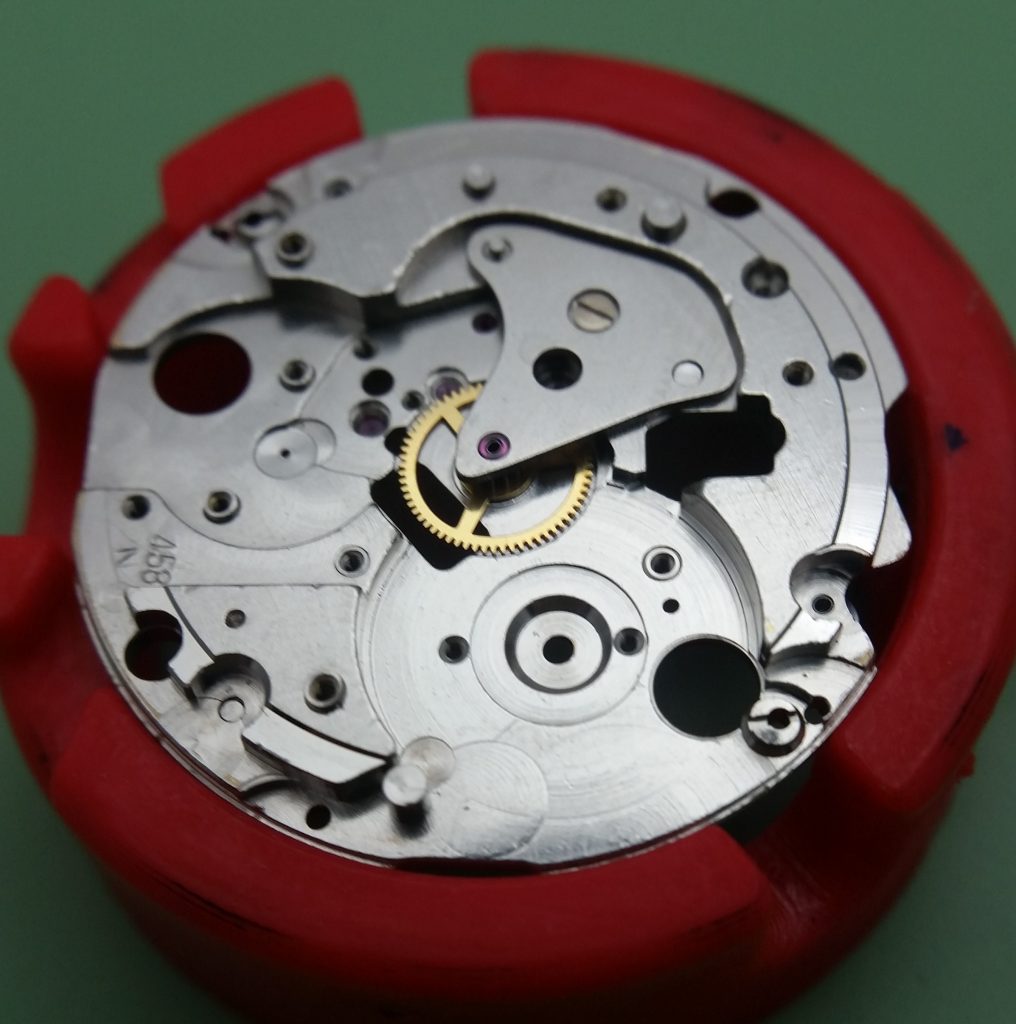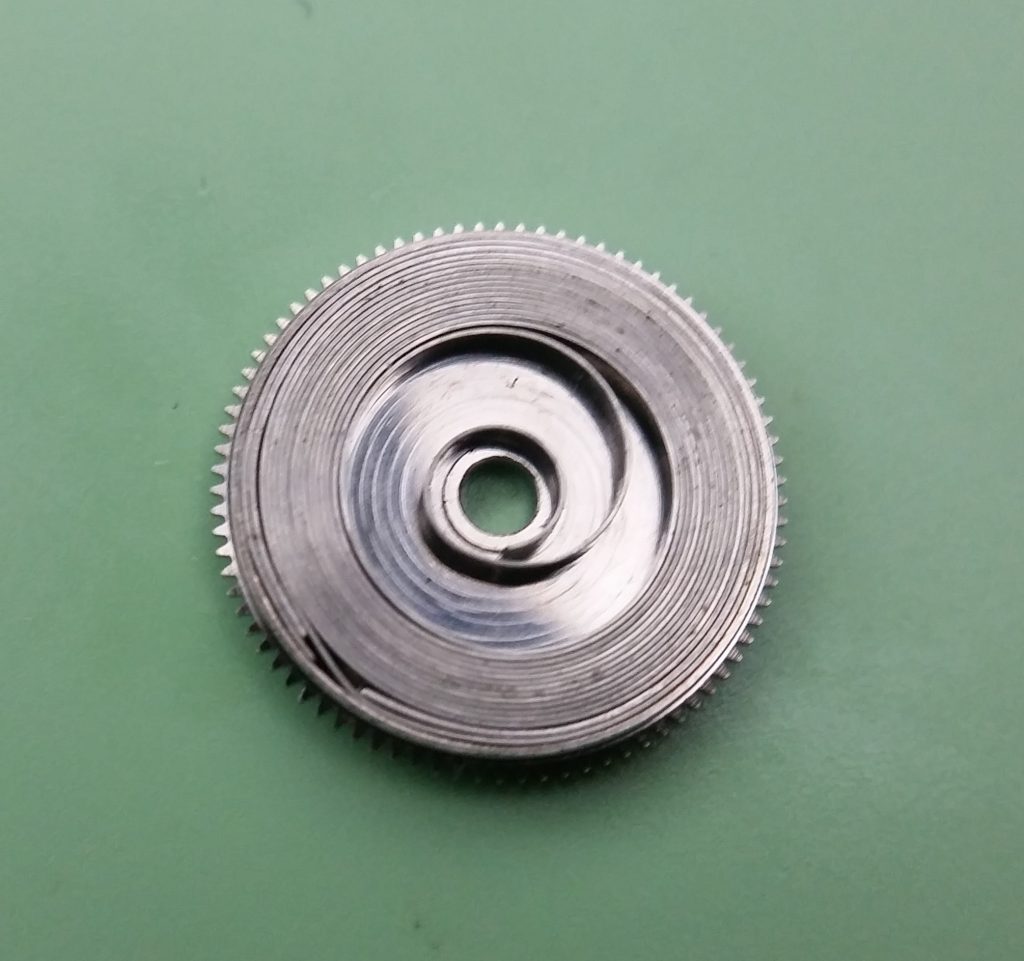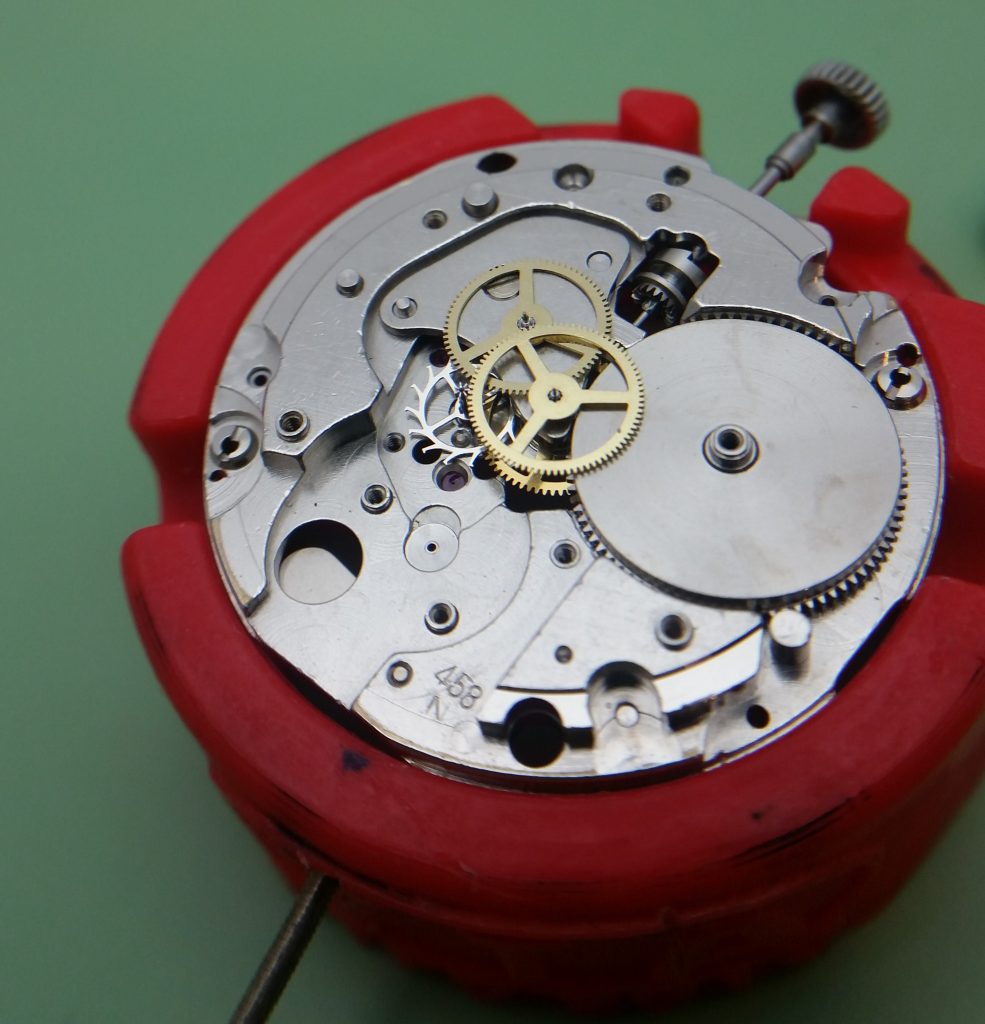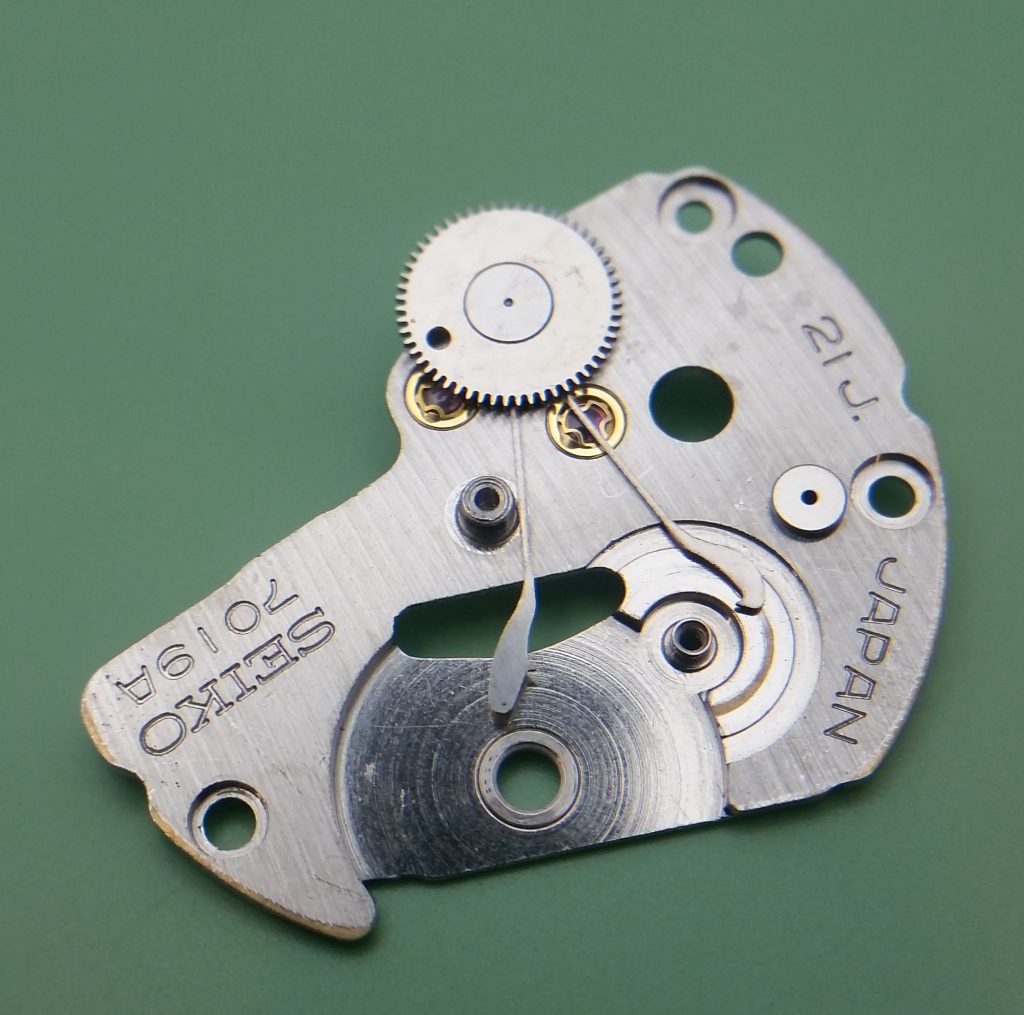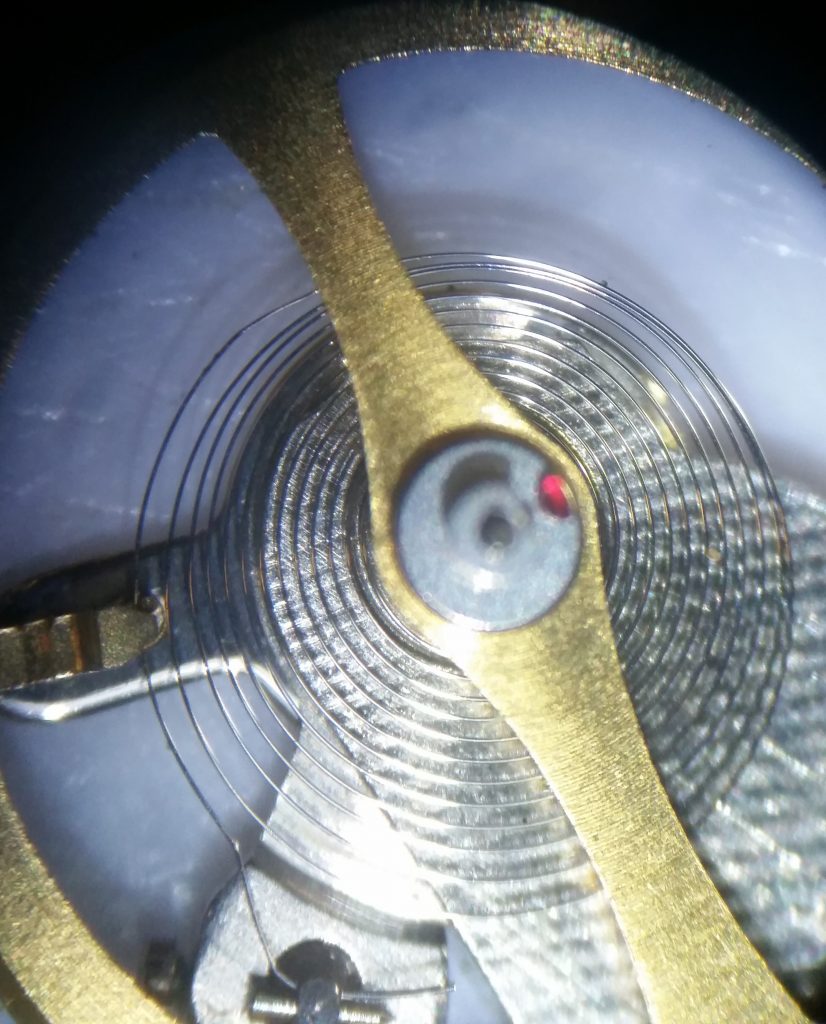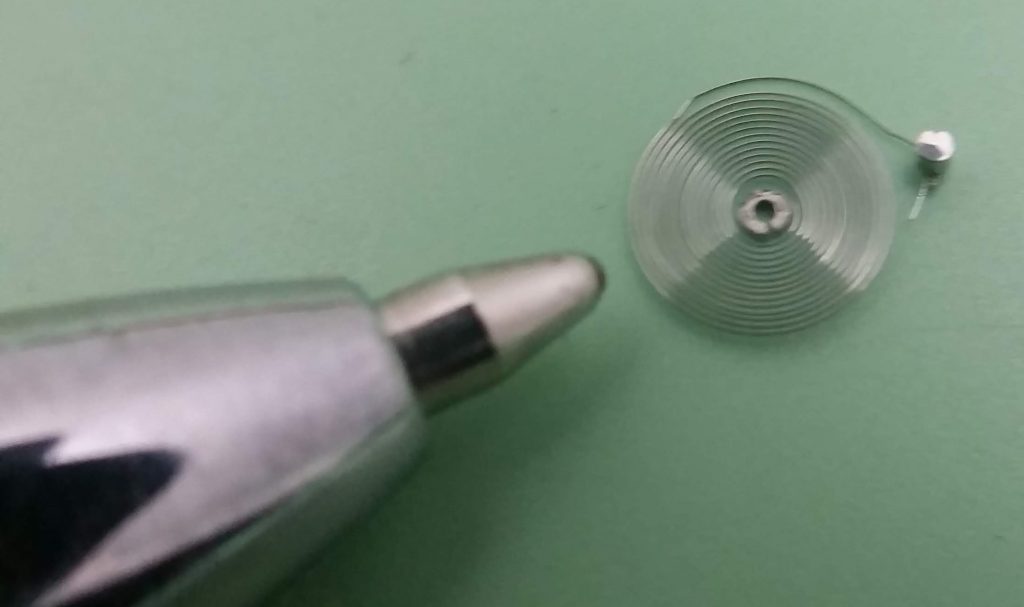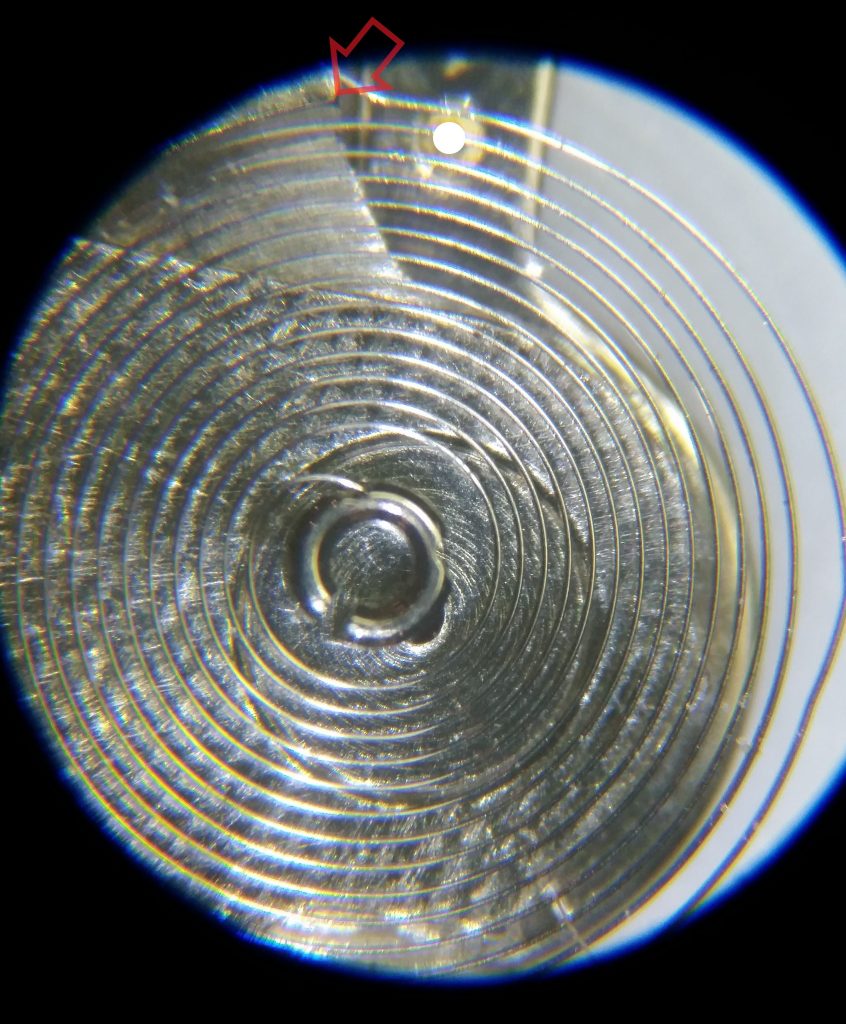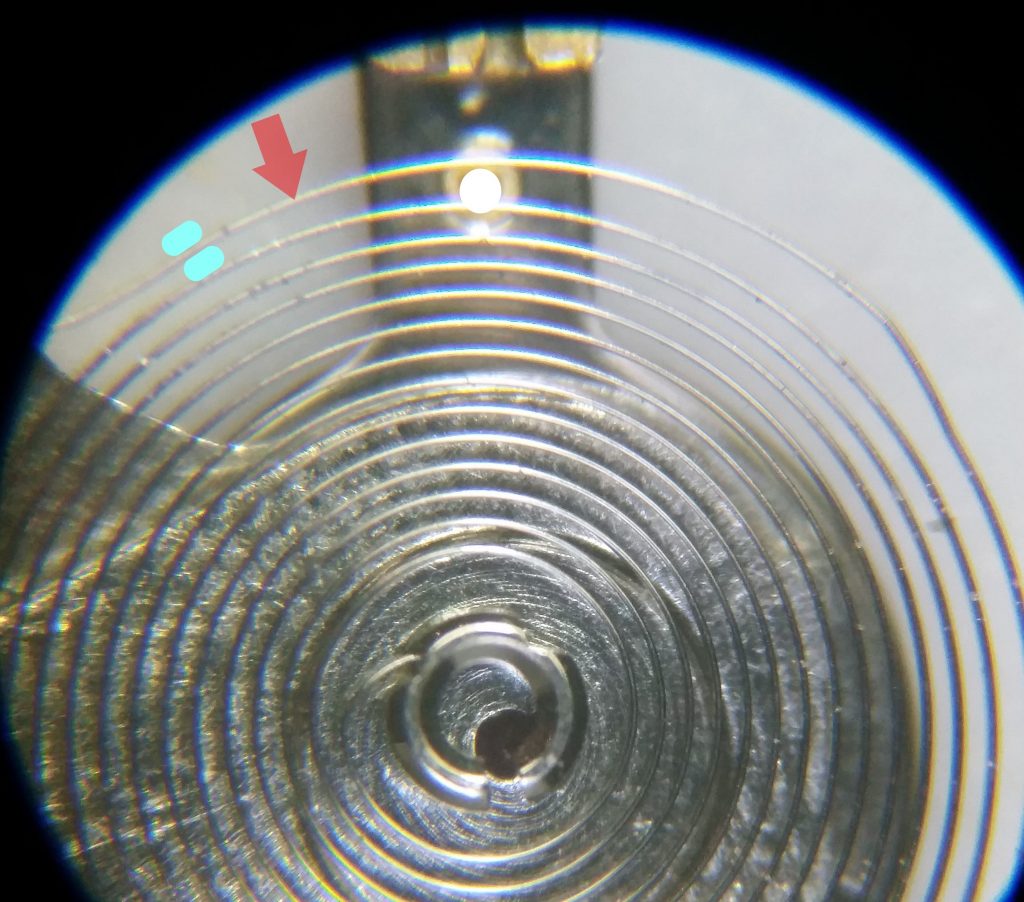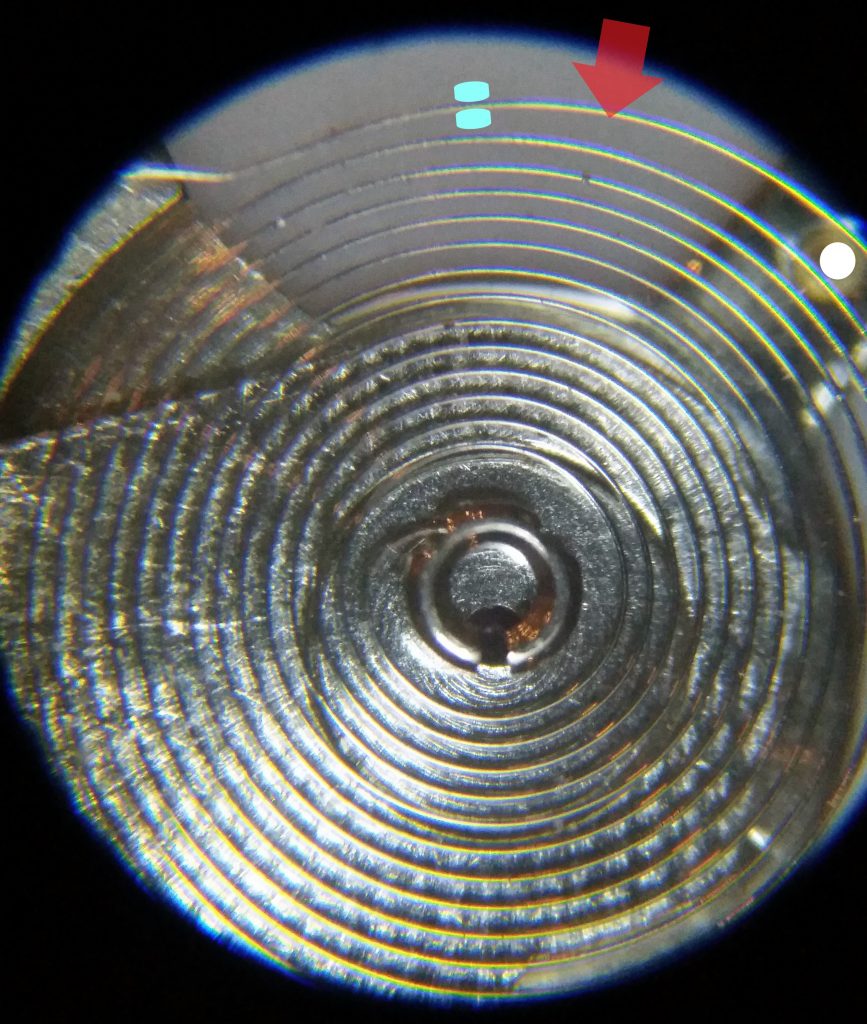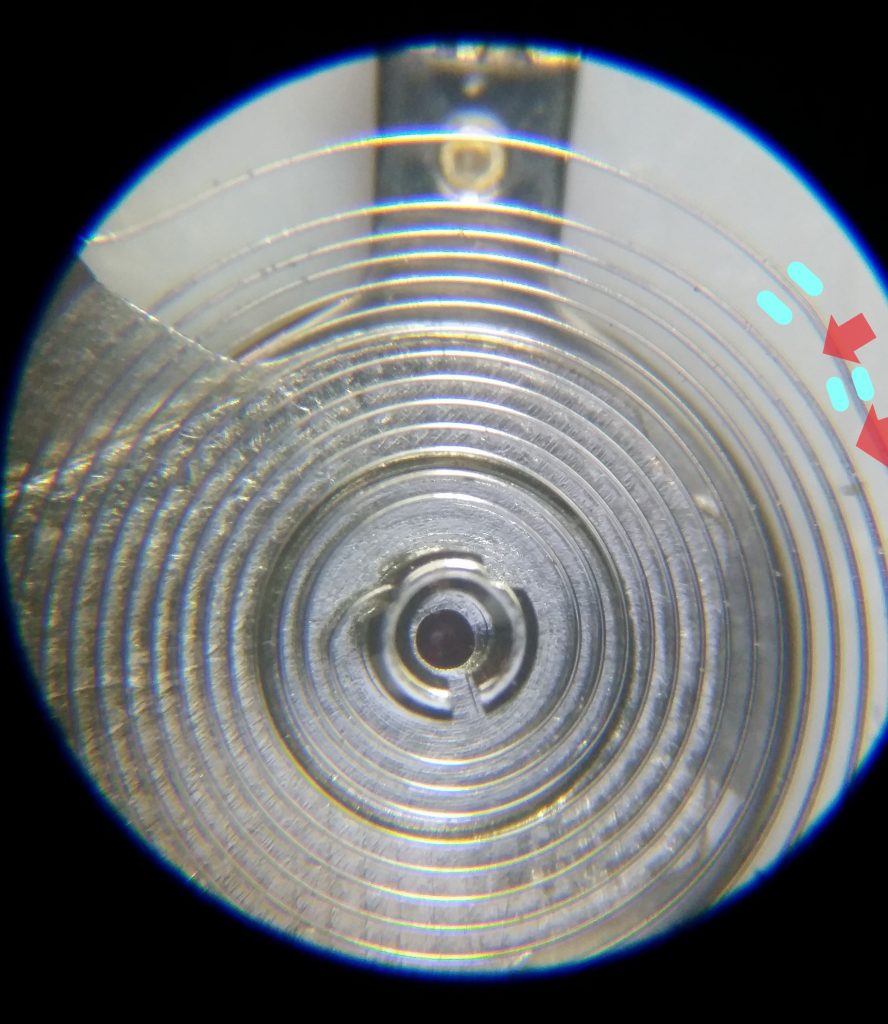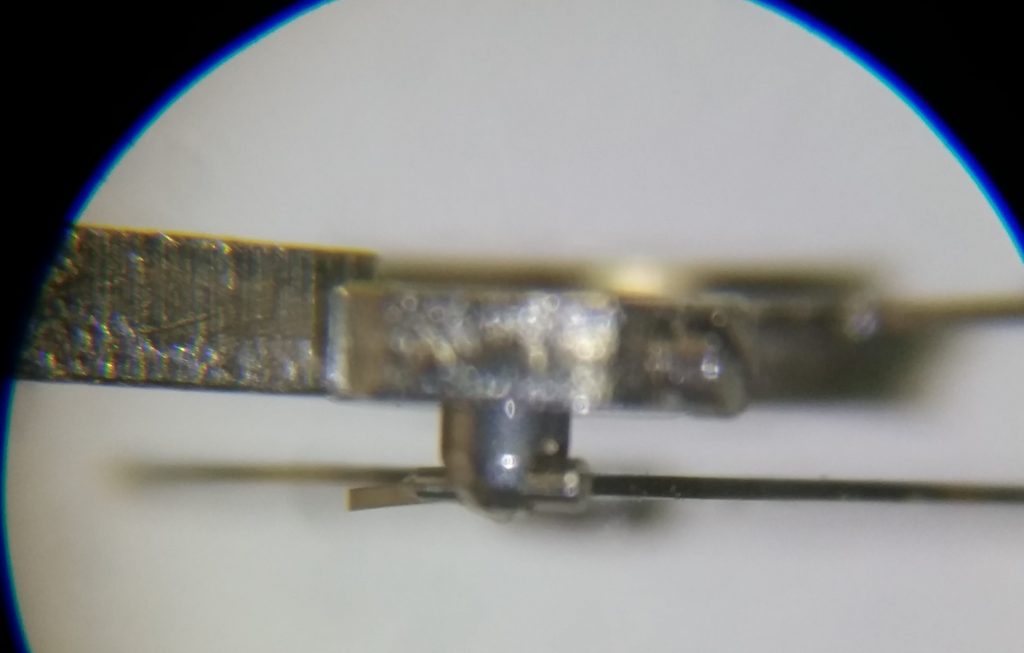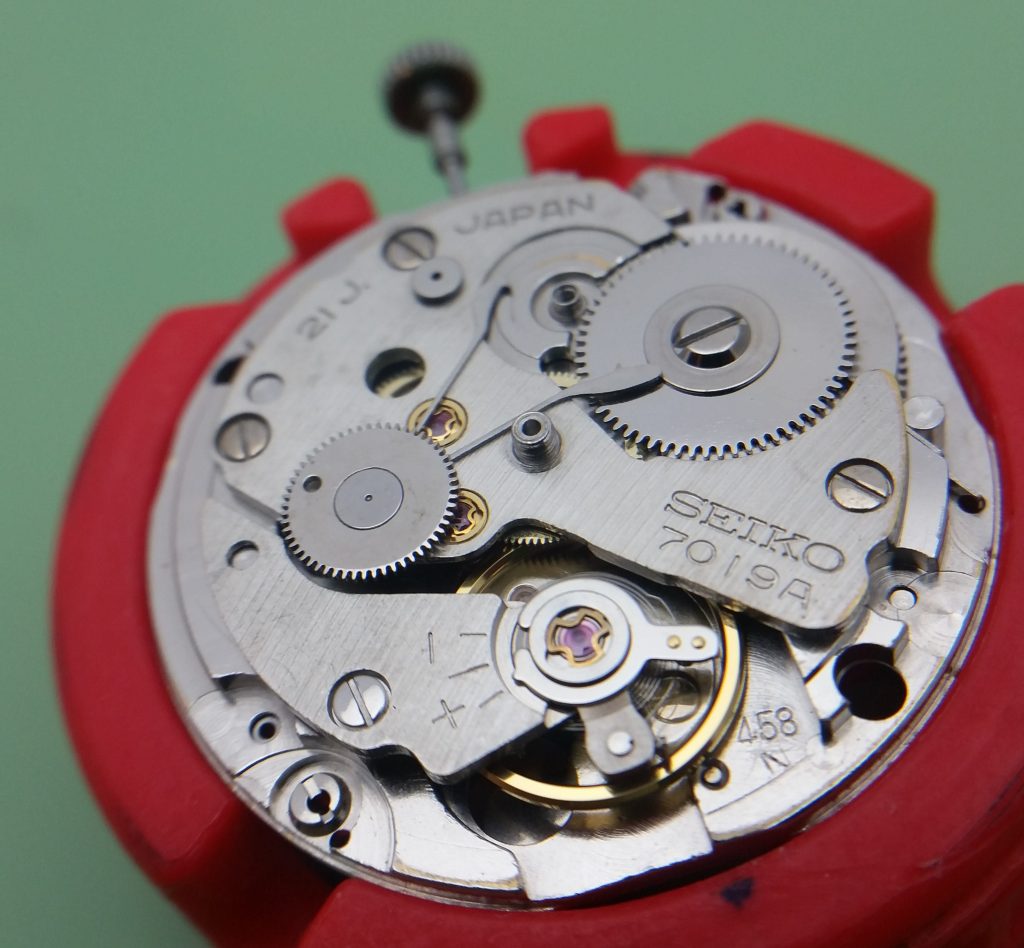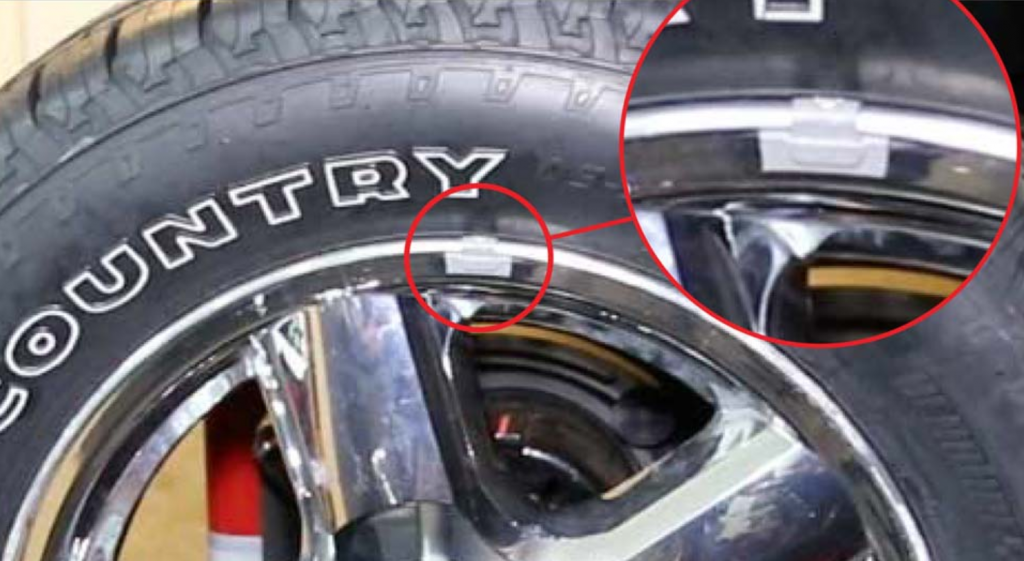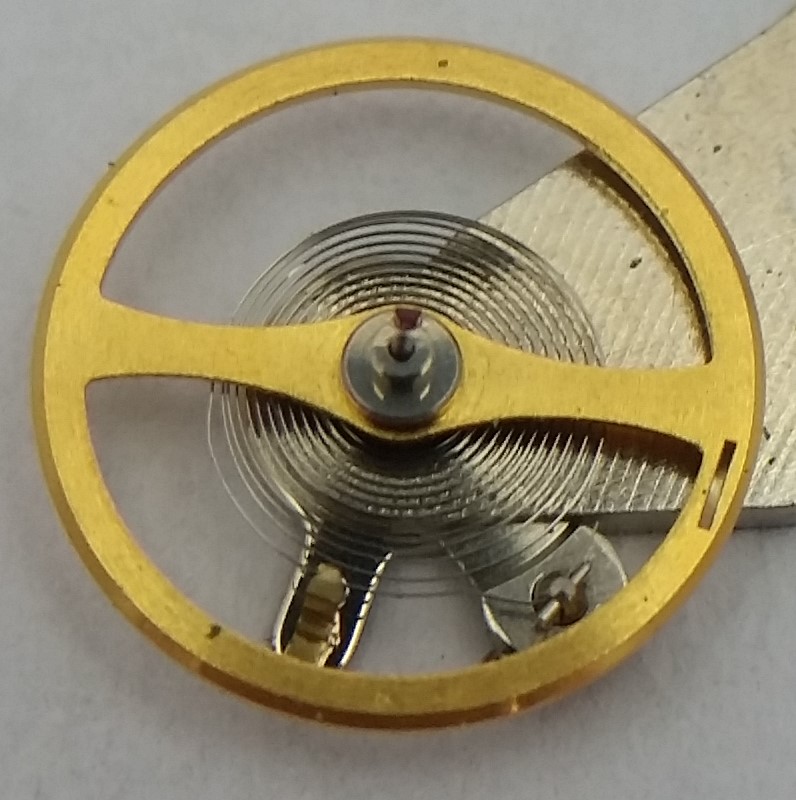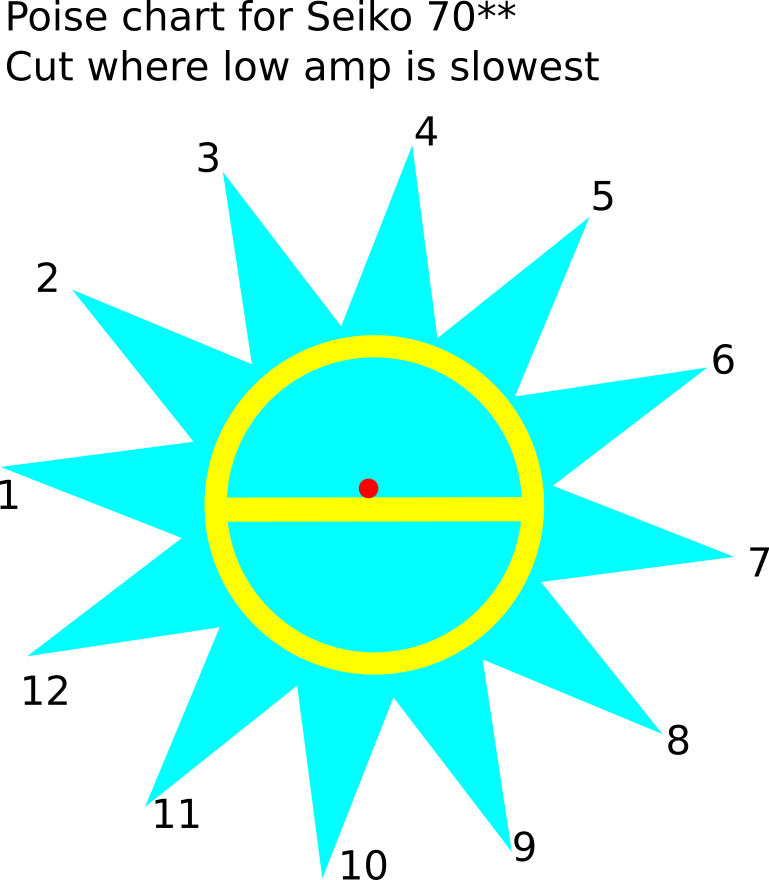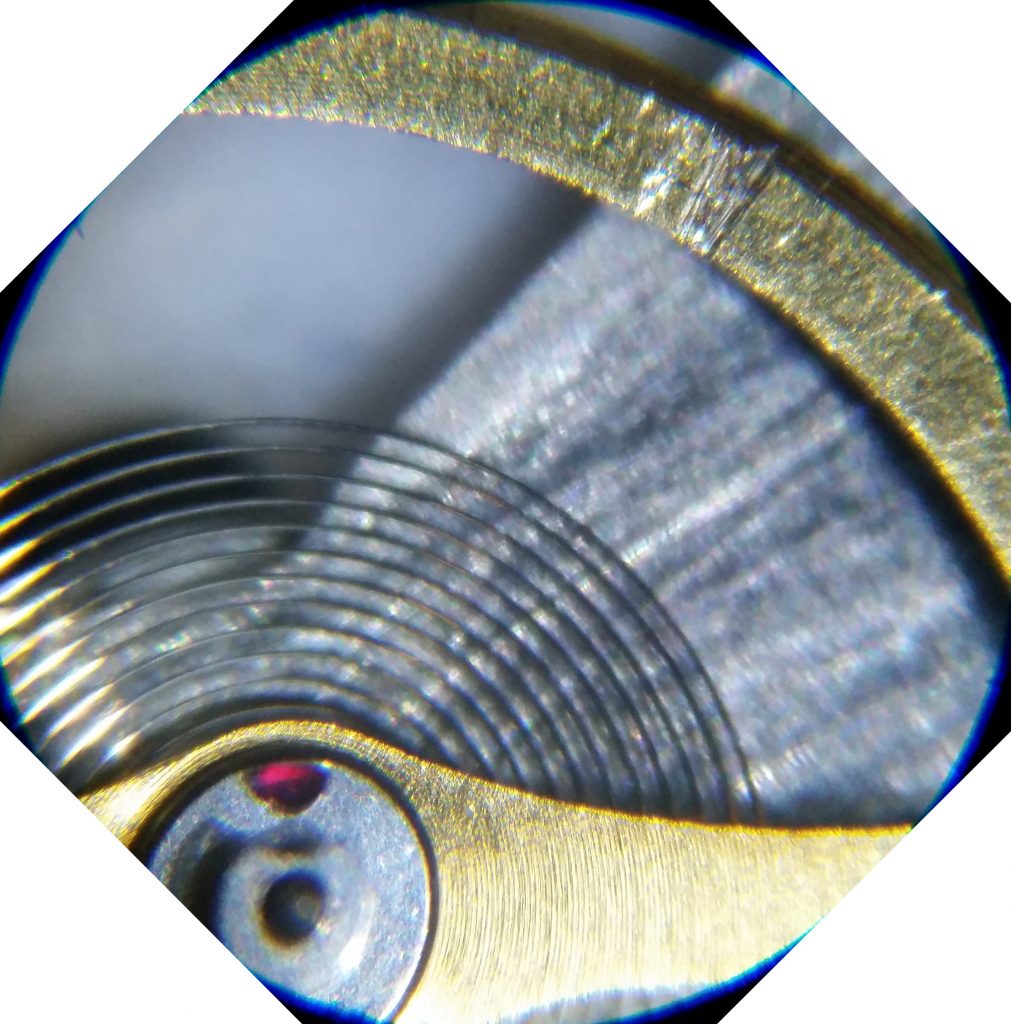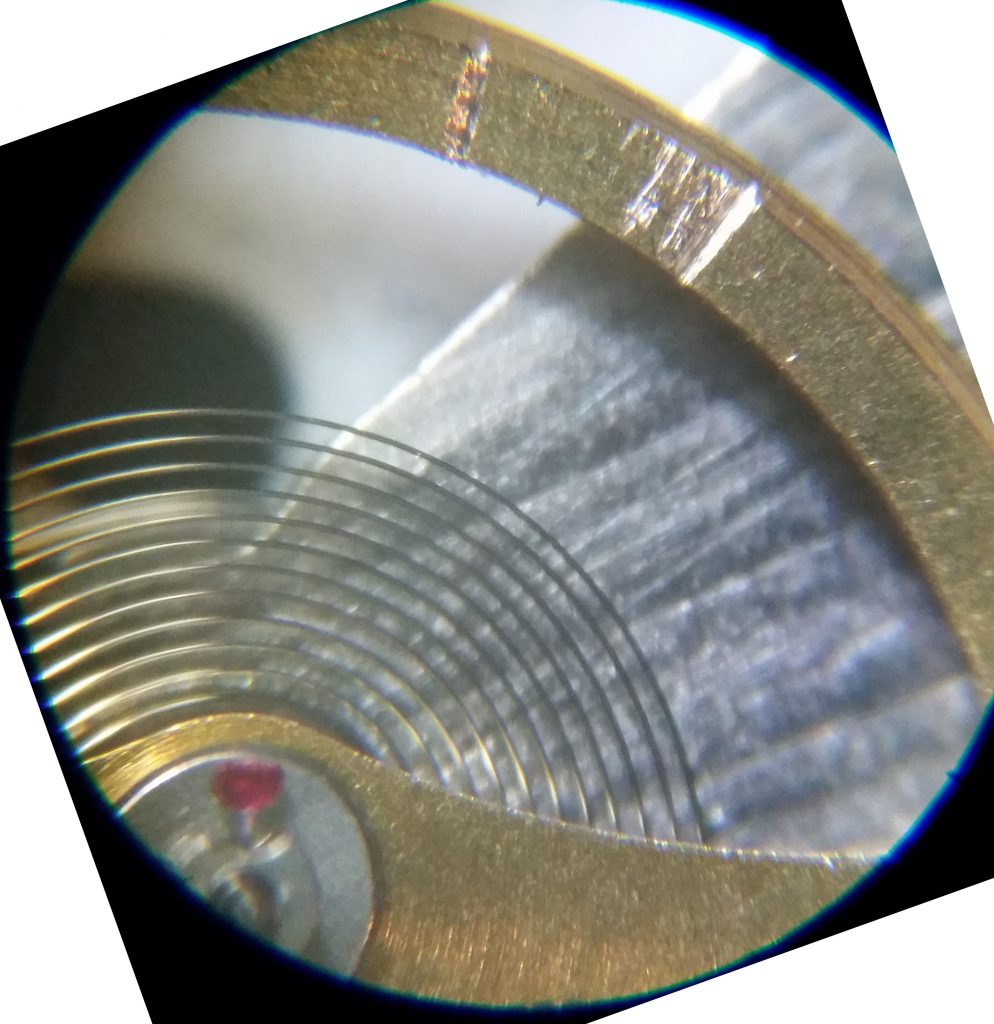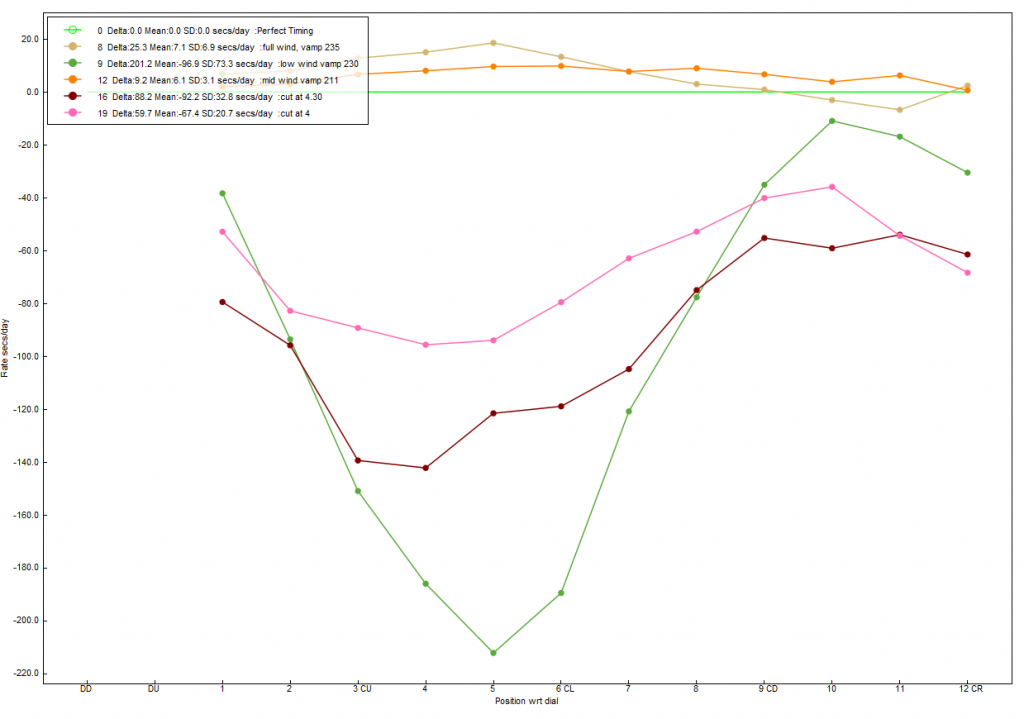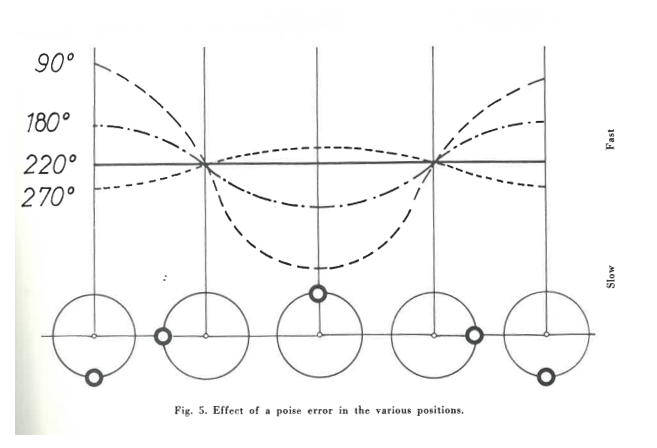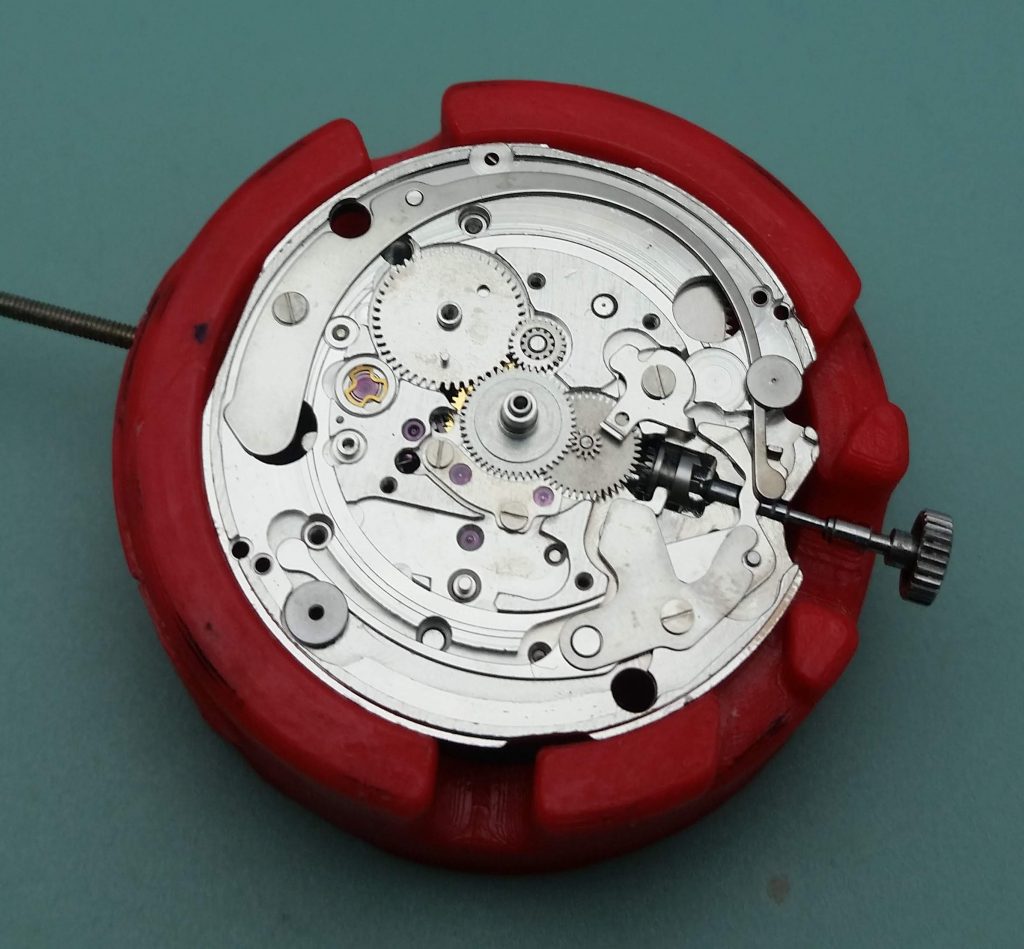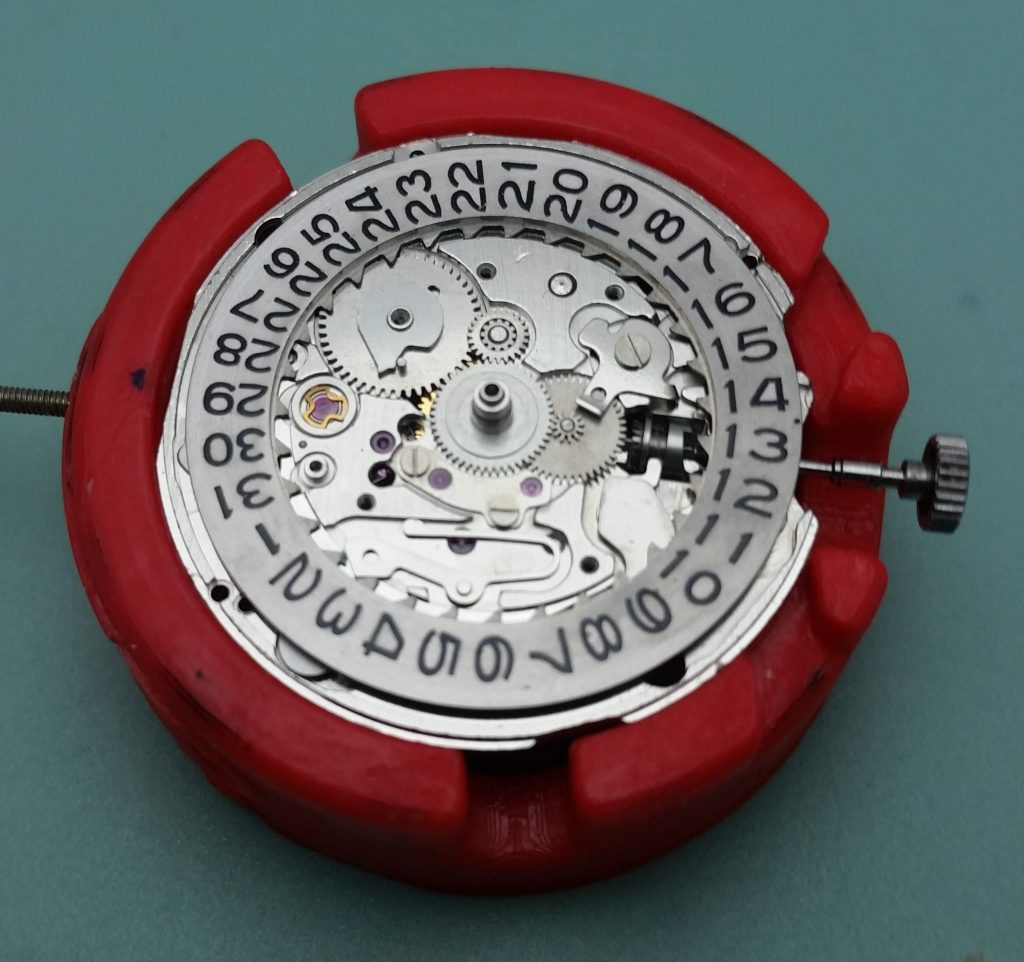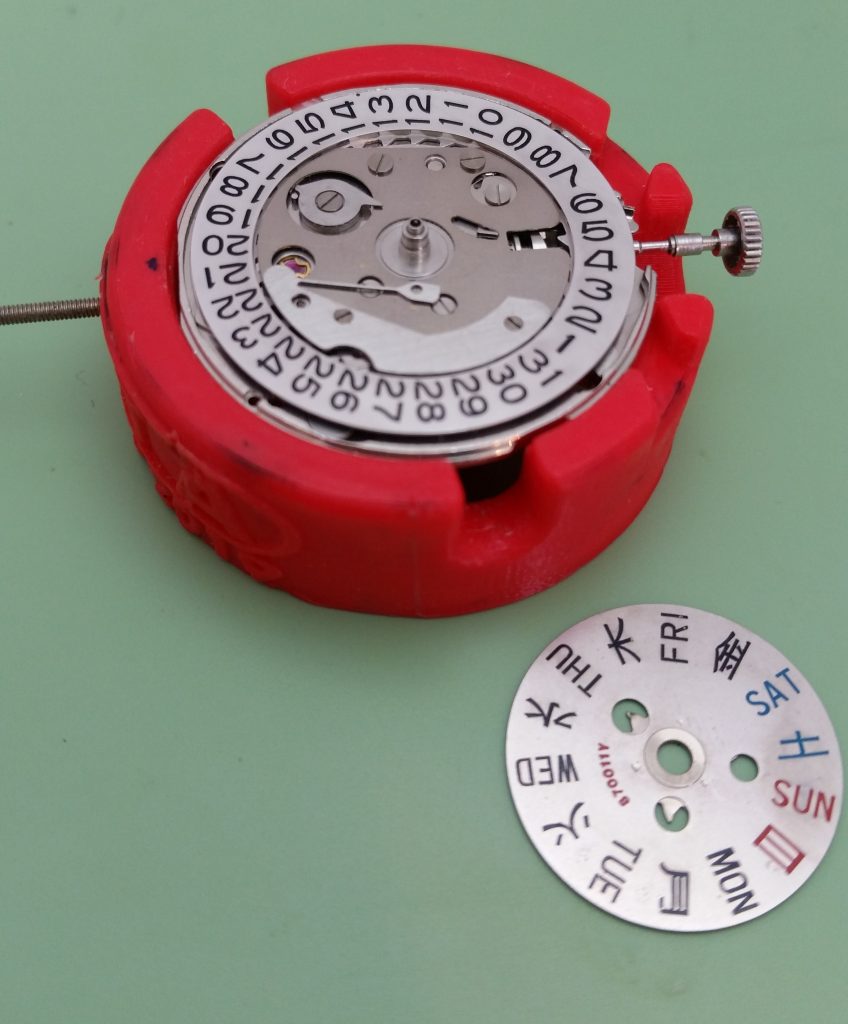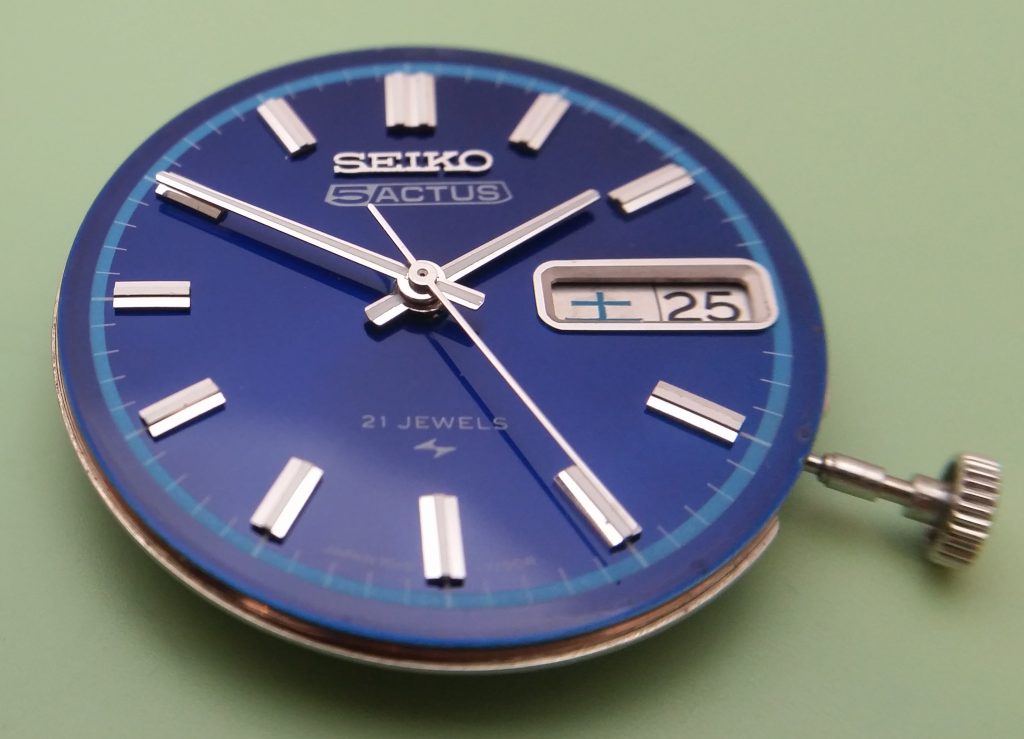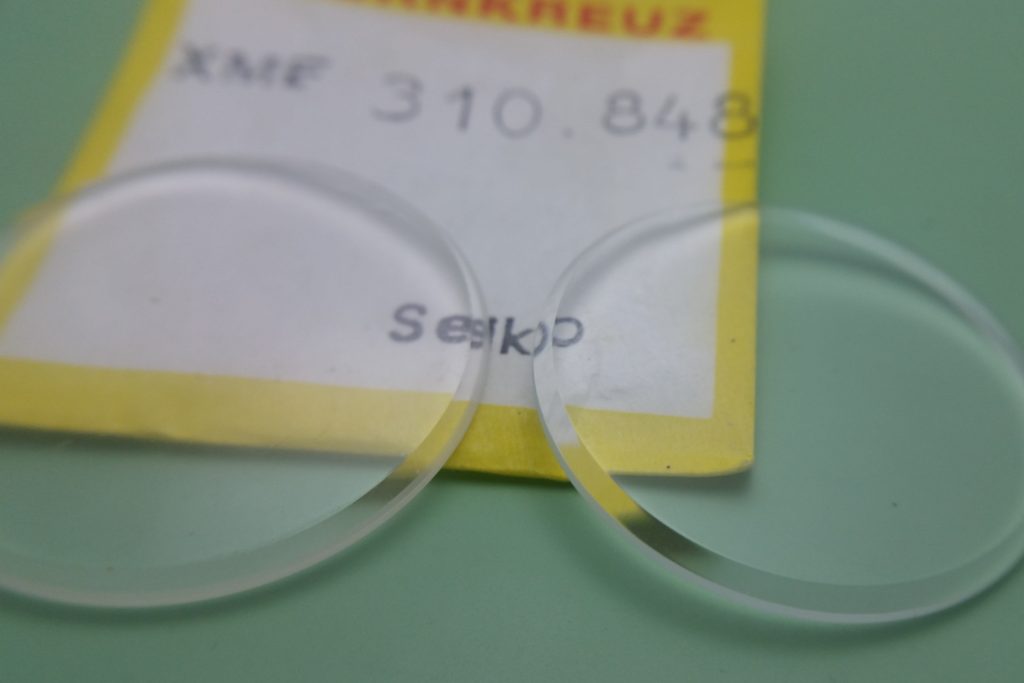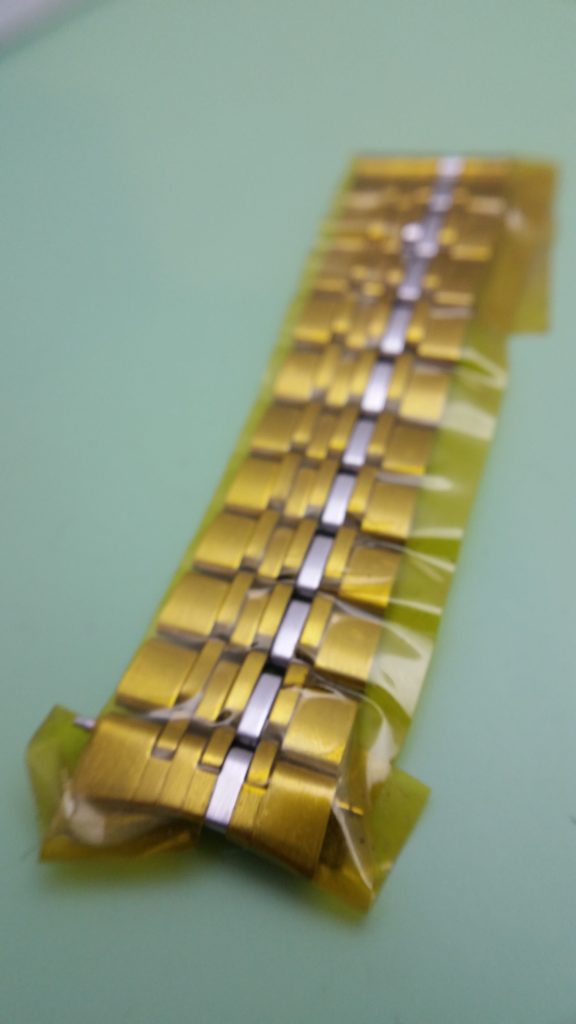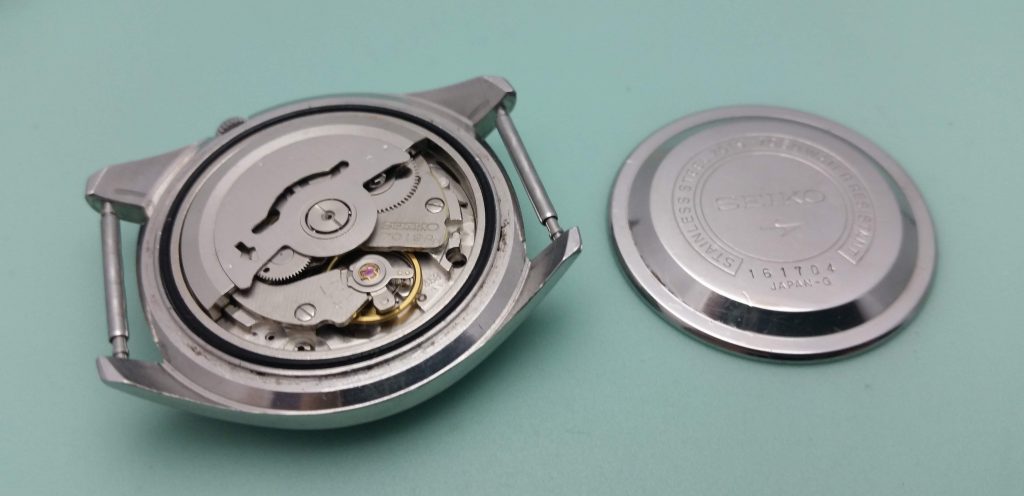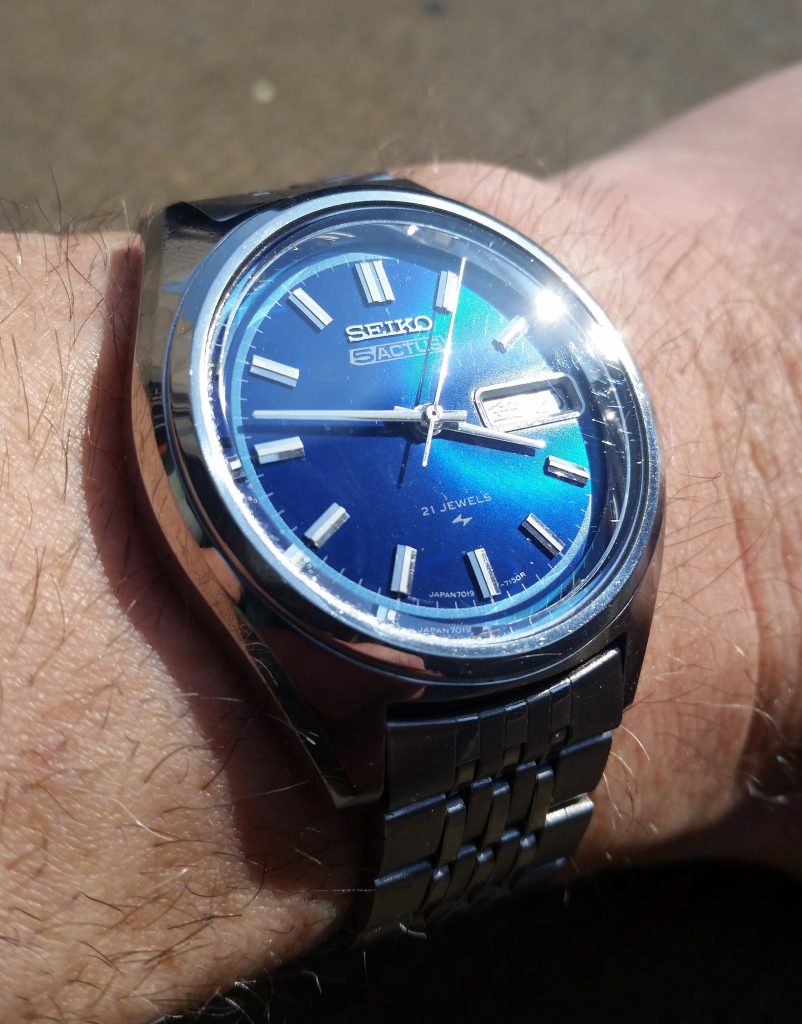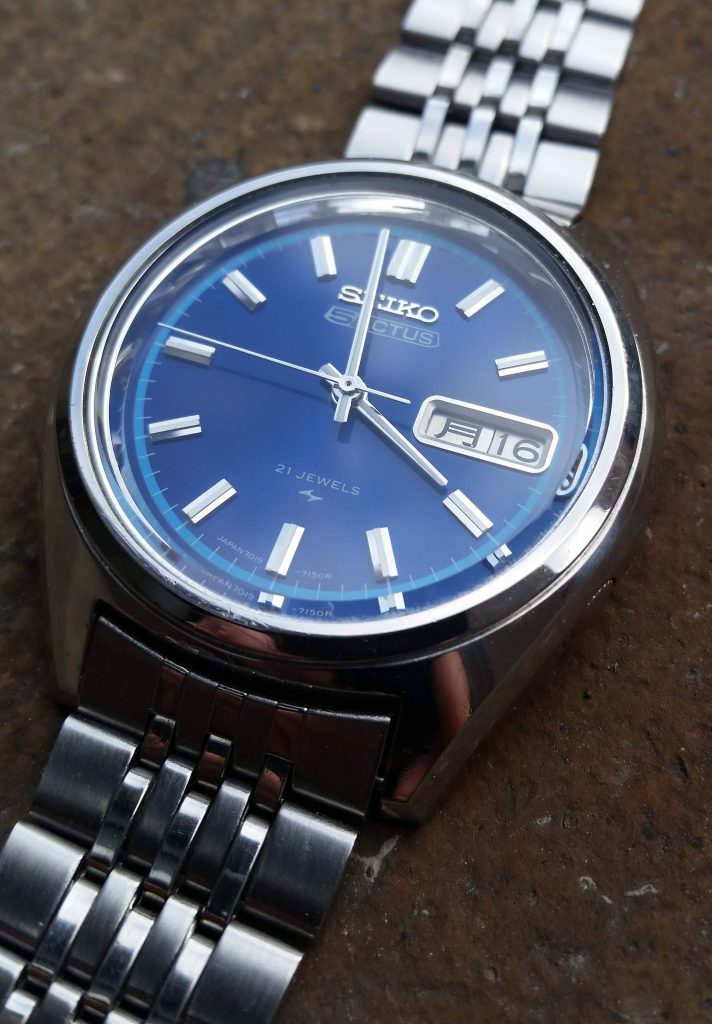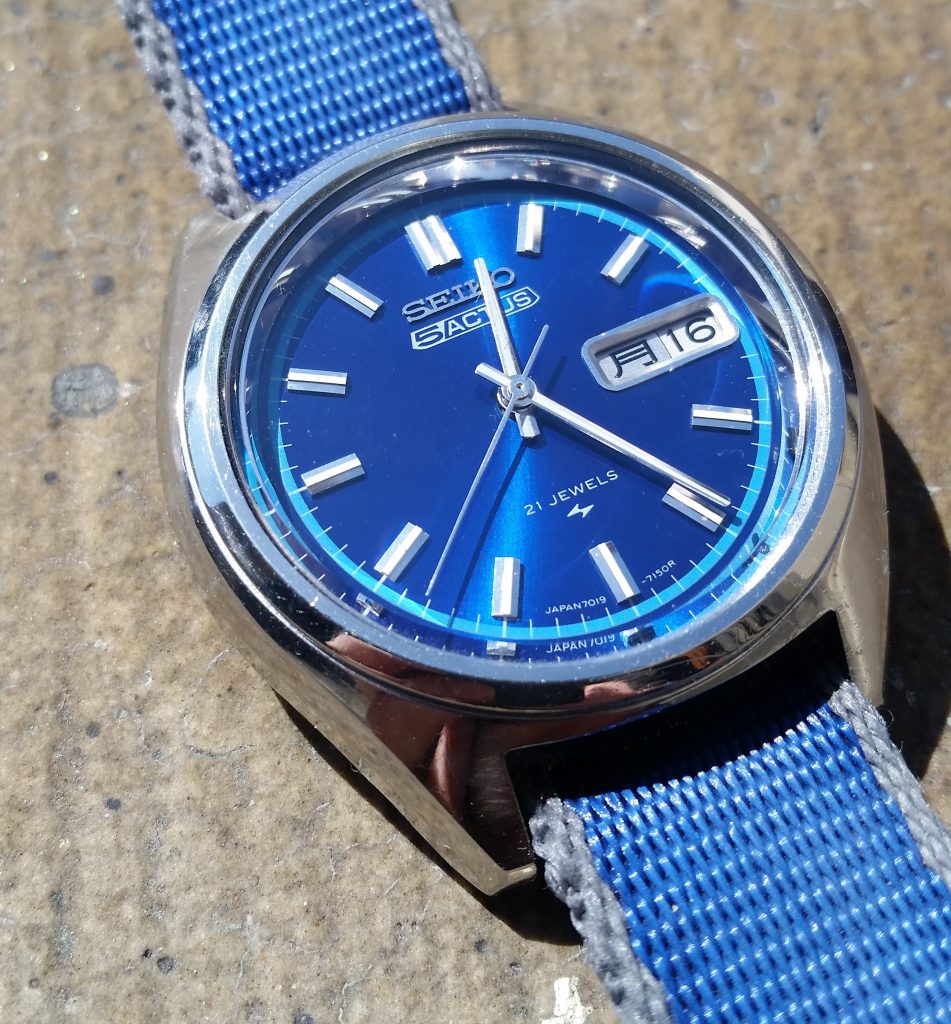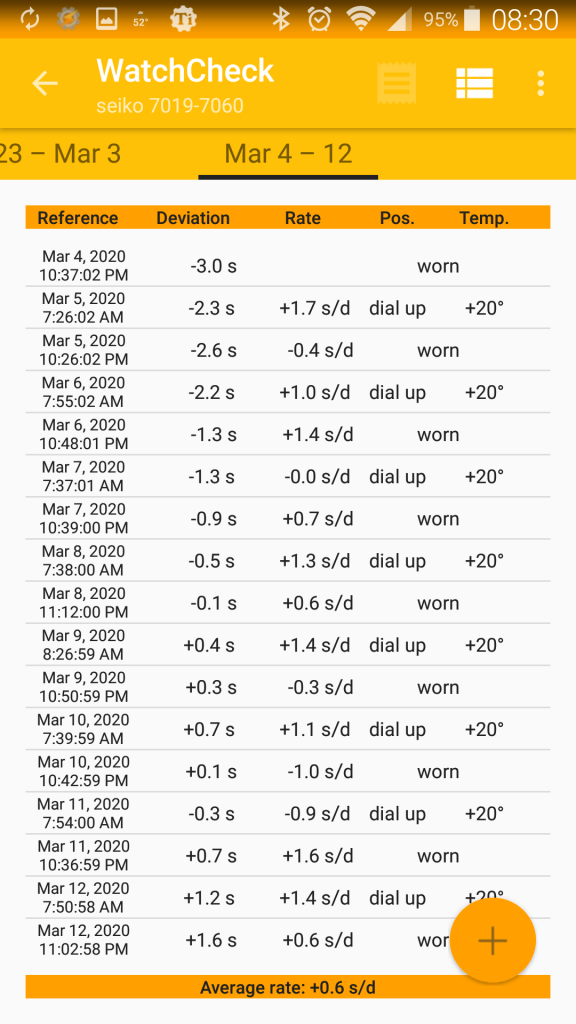Hover or touch on unknown words to show its meaning.
Try it here: “HorologyHorology The study of timekeeping.”
Sections are rated (0 to 3) for technical content. Use “Skip” to avoid too technical sections.
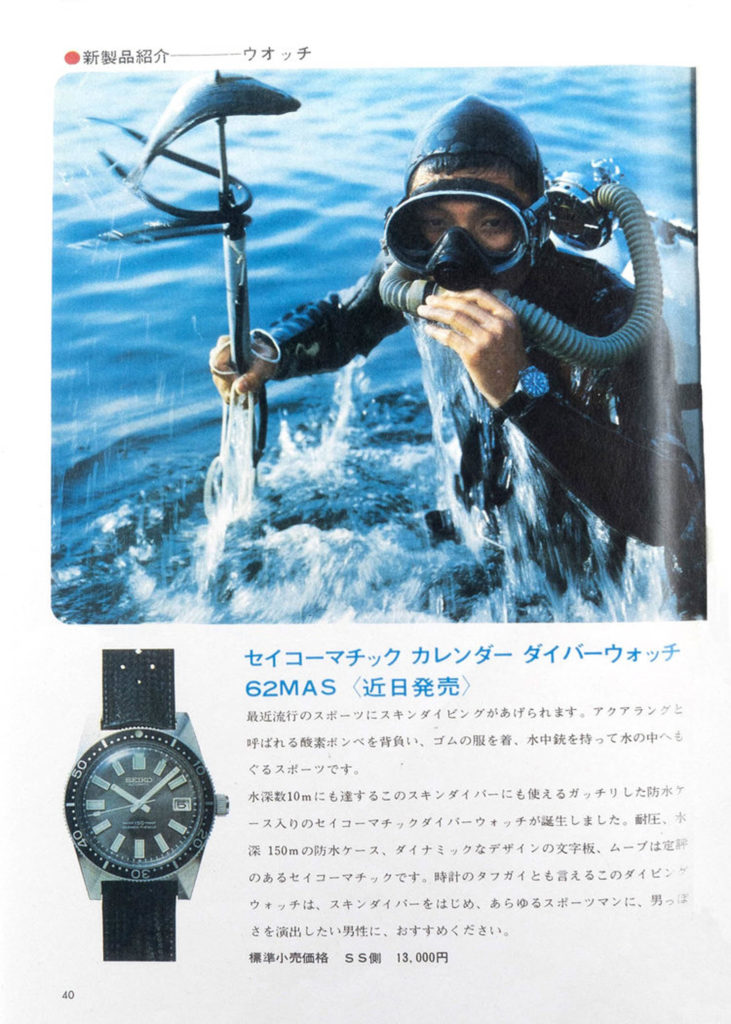
From the mid-sixties, SeikoSeiko A Japanese manufacturer of watches. produced a series of well-respected dive watchesdive watch A style of watch distinguished by extreme waterproofing, an external rotating numbered bezel, and large hands. that graced the wrists of professional and recreational divers alike. Rated for depths up to 150-600 meters, they ensured a robust and functional timepiece to avoid overexposure to nitrogen that could accumulate in the diver’s bloodstream to deadly effect.
SeikoSeiko A Japanese manufacturer of watches. also produced a range of “Sports” divers that I can only hope were used for no such thing.
The key to the dive watchdive watch A style of watch distinguished by extreme waterproofing, an external rotating numbered bezel, and large hands. is the rotating bezelBezel Circular ring surrounding, or just inside of, the crystal glass. Sometimes embossed with numbers and rotatable., a crude timer of sorts, that upon descending to the seafloor, is rotated in advance of the minute hand – the actual amount determined chiefly by the maximum underwater depth attained, with some adjustment due to time elapsed since any previous dive. As the mind’s judgment of the passage of time at these depths takes on a fluid, ethereal quality, an accurate and reliable timepiece was vital – when the minute hand ticked round to the bezelBezel Circular ring surrounding, or just inside of, the crystal glass. Sometimes embossed with numbers and rotatable.’s luminouslume Luminescent compound applied to the dial, hands, and sometimes bezel. It glows in the dark to allow low-light usage. pip it was time for the diver to ascend slowly to the surface. To better aid the diver’s rotation of the bezelBezel Circular ring surrounding, or just inside of, the crystal glass. Sometimes embossed with numbers and rotatable., possibly with cold or gloved hands, they were designed to be chunky, indexed to prevent accidental rotation, and sit external to the waterproof housing. That waterproofness was bolstered by a chunky crownCrown Small, decorative, external control used by the wearer to set time and calendars.
Usually at 3 o'clock. that, when not actively changing the time or date, was screwed down tight against the watch case, compressing its rubber gasketGasket Rubber seal, usually clamped tight, that prevents moisture and dirt from entering the watch. to better sealGasket Rubber seal, usually clamped tight, that prevents moisture and dirt from entering the watch. out the seawater.
None of these technical design considerations were deemed necessary to transfer to the everyday ‘sports’ diver range however – it was sufficient to have just a rotating, numbered bezelBezel Circular ring surrounding, or just inside of, the crystal glass. Sometimes embossed with numbers and rotatable., the majority of which were plastic rings, mounted internally and actuated by rotating the crownCrown Small, decorative, external control used by the wearer to set time and calendars.
Usually at 3 o'clock. – an act very likely to compromise the water tightness of its flimsy crownCrown Small, decorative, external control used by the wearer to set time and calendars.
Usually at 3 o'clock. gasketGasket Rubber seal, usually clamped tight, that prevents moisture and dirt from entering the watch. if ever performed submerged. While nominally rated for depths of 70m, (well over double the depth that a recreational diver would descend), the whole point was for the wearer to invoke the spirit of oceanic adventure, while actually remaining safely on dry land – with possibly just a quick dip in the pool to showboat its credentials.
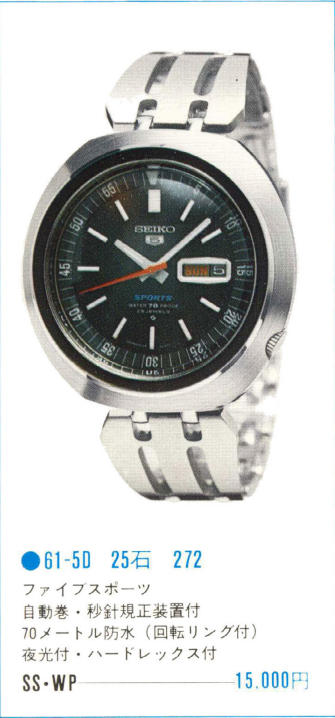
So, while they might be thought of as a watch for the ‘boy racer’ – a mildly derisory term for a (generally) young, and (always) male, driver who embellishes his otherwise pedestrian car with the spoilers and graphical flair of his professional race-car heroes, these Sport Divers have won themselves a place in the affections of collectors of all things pre-quartzpre-quartz Functional timekeeping switched from mechanical to quartz mechanisms in the early 70s. This caused a total shakeup of the industry with many mergers, downsizings, and bankruptcies.. They wear well on the wrist, with just a bit more presence than their dress watchDress watch A sleek, smart, and slim style of watch to be worn with a suit. Typically without sub-dials, lume, or even numbers on the dial. brethren, particularly with NATO straps, but without the chunkiness of their full-featured deepwater progenitors. Best of all they are still relatively affordable, plentiful, and straightforward to restore – let’s dive in!
One such model was the SeikoSeiko A Japanese manufacturer of watches. 5 Sports 6106-6040, seen above in a vintage Japanese catalog – complete with all too rare original strap. The fixed outer bezelBezel Circular ring surrounding, or just inside of, the crystal glass. Sometimes embossed with numbers and rotatable. has a decorative black band that all too often is partially or completely absent, so when one showed up on Yahoo JapanYahoo Japan Japanese ebay style auction website. with just a small chink missing I decided to take the plunge. There were other aesthetic issues too, most notably loom rot on the hands, and the oft accompanying corrosion of the surrounding plating, but hopefully we can get it all back in vintage, albeit not showroom, condition.
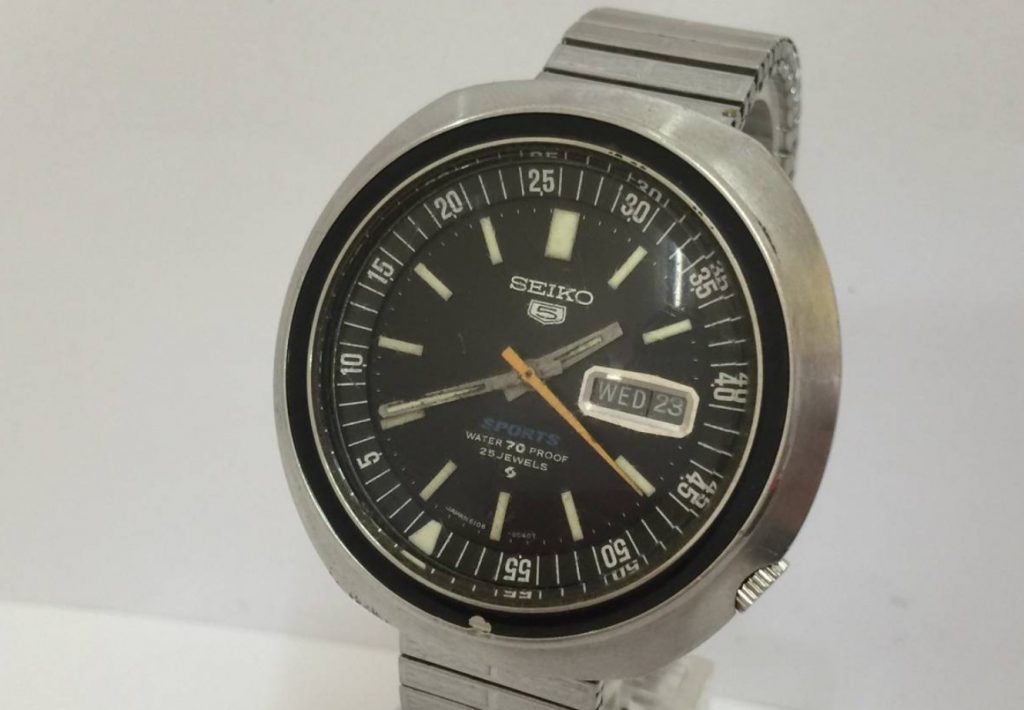

After a very slow transit from Tokyo, it landed on my bench ready for inspection. While it was indeed ticking, the signal was too weak to get a steady timegrapherTimegrapher Electronic device that listens to the ticking of a watch to determine if it's running well. reading from, although it occasionally flickered a miserable amplitudeAmplitude A measure of how far the balance wheel is rotating each swing.
Analogous to how wide a pendulum is swinging.
Measured in degrees, with higher being better (up to around 330 degrees) around 140°. More immediately troubling was the crownCrown Small, decorative, external control used by the wearer to set time and calendars.
Usually at 3 o'clock. spinning without rotating the bezelBezel Circular ring surrounding, or just inside of, the crystal glass. Sometimes embossed with numbers and rotatable. – I feared that the crownCrown Small, decorative, external control used by the wearer to set time and calendars.
Usually at 3 o'clock. and stemstem Thin metal rod that transfers the user-adjustments of the crown into the heart of the movement. may have been ‘donated’ to another, higher value, timepiece, (such as a 6139 chronographChronograph A watch that can act as a stopwatch.
Not to be confused with a Chronometer - a high precision watch.), as they are in short supply, and replaced with a more commonplace 6106 standard stemstem Thin metal rod that transfers the user-adjustments of the crown into the heart of the movement.. Fortunately, the stemstem Thin metal rod that transfers the user-adjustments of the crown into the heart of the movement. and pinionPinion A small cog - the teeth are referred to as leaves. were still present, as just the spring had been plundered – and I had a suitable donorDonor A spare part collected from a defunct movement. Quite often the only choice for vintage watch repairs. ready and waiting. The teeth on the underside of the rotating bezelBezel Circular ring surrounding, or just inside of, the crystal glass. Sometimes embossed with numbers and rotatable. are another vulnerable point, as ham-fisted insertion of the stemstem Thin metal rod that transfers the user-adjustments of the crown into the heart of the movement. can shear or burr a nylon tooth, leaving a bezelBezel Circular ring surrounding, or just inside of, the crystal glass. Sometimes embossed with numbers and rotatable. that will only rotate 359°. My luck held – the teeth were all present and correct. The final pitfall with the bezelBezel Circular ring surrounding, or just inside of, the crystal glass. Sometimes embossed with numbers and rotatable. is that the lumelume Luminescent compound applied to the dial, hands, and sometimes bezel. It glows in the dark to allow low-light usage. pip at 12 is liable to displace and crumble if mishandled – it’s quite the minefield with these Sports divers.

Original crownCrown Small, decorative, external control used by the wearer to set time and calendars.
Usually at 3 o'clock. gasketsGasket Rubber seal, usually clamped tight, that prevents moisture and dirt from entering the watch. are also in short supply, with generic replacements not being in spec.
The next concern was the hands – here seen under the microscope. Not pretty.

The lumelume Luminescent compound applied to the dial, hands, and sometimes bezel. It glows in the dark to allow low-light usage. on the dialDial The visible face of the watch. and inner bezelBezel Circular ring surrounding, or just inside of, the crystal glass. Sometimes embossed with numbers and rotatable. was still very presentable, but the hands are often the first to suffer from moisture damage. I have heard this ascribed to the hands being nearer the crystalCrystal The clear glass on the front of a watch. and thus more exposed to the moisture that condenses on the underside of a relatively cold crystalCrystal The clear glass on the front of a watch.. My own observation that the mold is more pronounced on the back of the hands leads me to conjecture that the thinnest layer of lumelume Luminescent compound applied to the dial, hands, and sometimes bezel. It glows in the dark to allow low-light usage. on the back of the hand limbs ( to avoid abrasion against a lower hand or dialDial The visible face of the watch. ) provides easier purchase for the mold, from whence it migrates to the edges, and eventually front, of the lumelume Luminescent compound applied to the dial, hands, and sometimes bezel. It glows in the dark to allow low-light usage. in the channel, and from there lifts the decorative plating of the hands. The seconds sweep hand was also quite faded and stained in parts.
The tides of vintage timepiece fashion have flowed towards embracing the evidence of a watch’s hard-lived life, and while my tastes do float with those rising waters, I also like the look of uniform wear. Hands this far gone on an otherwise gently loved dialDial The visible face of the watch. and case, would be just as glaring as replacing the hands with a shiny new old-stock pair, (at considerable cost), so after much deliberation, I elected to go for a deep restoration of the original handset. One factor that swung my decision was their sinteredSintered a powder deposited onto a surface - adding color and texture., rather than more usual polished, finish which is far more forgiving of the kind of treatment it was set to endure.
The first action was to remove the existing lumelume Luminescent compound applied to the dial, hands, and sometimes bezel. It glows in the dark to allow low-light usage., in the hope of reusing the cleaner portions, or at least as a guide for color-matching the replacement. Then the hands go for ultrasonicUltrasonic A machine that shakes loose dirt and grease by vibrating the cleaning fluid at very high frequency. cleaning in jeweller’s pickle – a warm concoction chiefly comprising of white vineger and salt. After a little coaxing with pegwoodpegwood A very soft wood, usually the shape of a toothpick, that is used for cleaning away encrusted dirt without damaging the underlying brass., dabbing with rodicoRodico a soft putty used to pick up grease, dirt, dust, etc., and padding with q-tips, the worst of the black staining was removed, but in places the bare brass beneath was exposed.
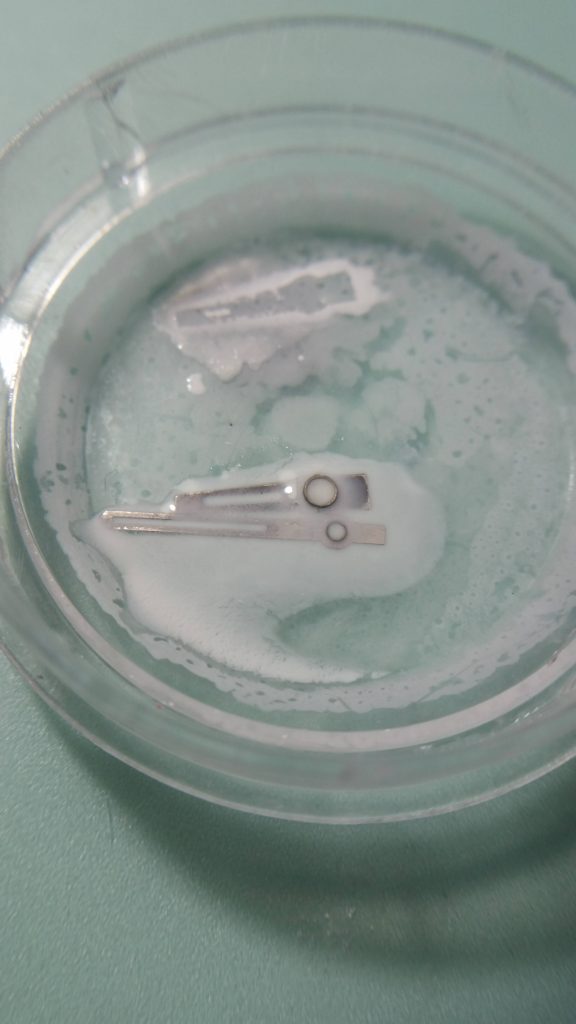
The hands were then immersed in a few cycles of Magic RhodiumMagic Rhodium Milky compound used to deposit a thin layer of Rhodium (a silver metal) onto brass parts that have had their silver-colored plating abraded away. to recolor them to a reasonable facsimile of the sinteredSintered a powder deposited onto a surface - adding color and texture. finish of the original.
As mentioned, I had hoped to reuse the unstained original lumelume Luminescent compound applied to the dial, hands, and sometimes bezel. It glows in the dark to allow low-light usage. in the replacement mix, but that proved impractical as the entirety of the back was stained. A new batch of inactive lumelume Luminescent compound applied to the dial, hands, and sometimes bezel. It glows in the dark to allow low-light usage. was mixed up and very slightly color tinted to match the original.
The worst of the staining was removed from the second hand, but it was still a little sad and faded. One option is to simply paint a fresh coat of bright orange on top, but on this model the finish is also slightly metallic, to match the minute and hour hands, and the flakes in metallic model paint are an order of magnitudeOrder of magnitude a factor of 10 times larger. Instead, I choose to simply keep it original, although it would no longer be the dynamic flash of color on the dialDial The visible face of the watch..
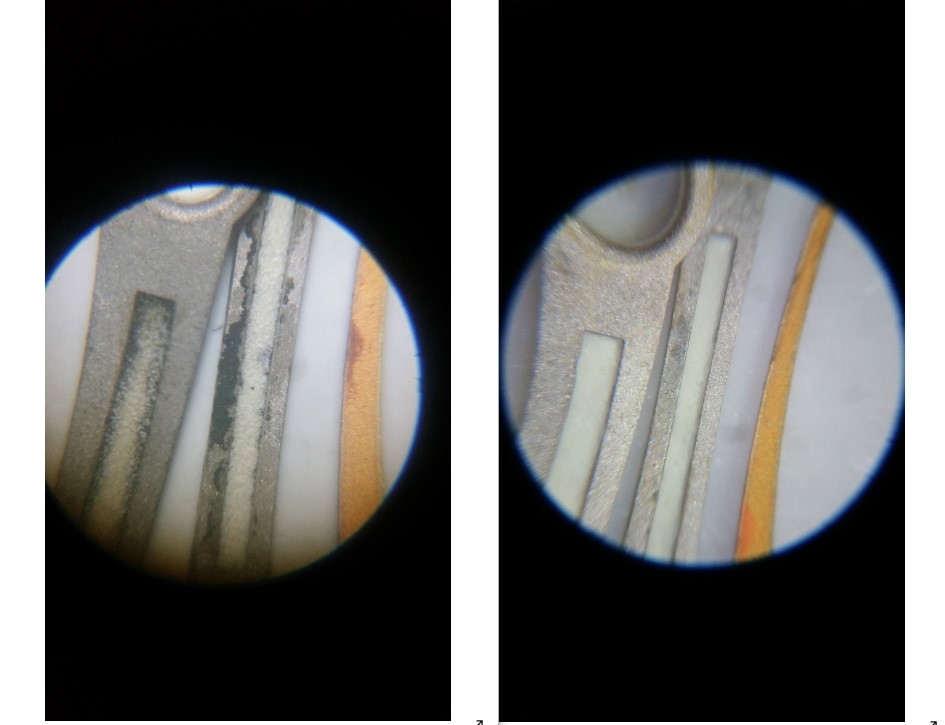
Once again, this simple approach will not give good results on polished handsets.
The results are far from flawless, but one of the advantages of working under microscope magnification is that upon reverting to regular viewing, the imperfections that so torment the obsessive perfectionist simply vanish in the blur that is my current state of vision.
And so on to the last esthetic issue – the repair of the outer bezelBezel Circular ring surrounding, or just inside of, the crystal glass. Sometimes embossed with numbers and rotatable.. This was easily resolved with matt black model enamel, slightly diluted to allow it to flow sufficiently to fill the damaged area, but not so much that it would flow under the remaining ring. I doubt this approach would work if larger sections were amiss, and would likely be eye-catchingly uneven if attempting to replace the entire ring.
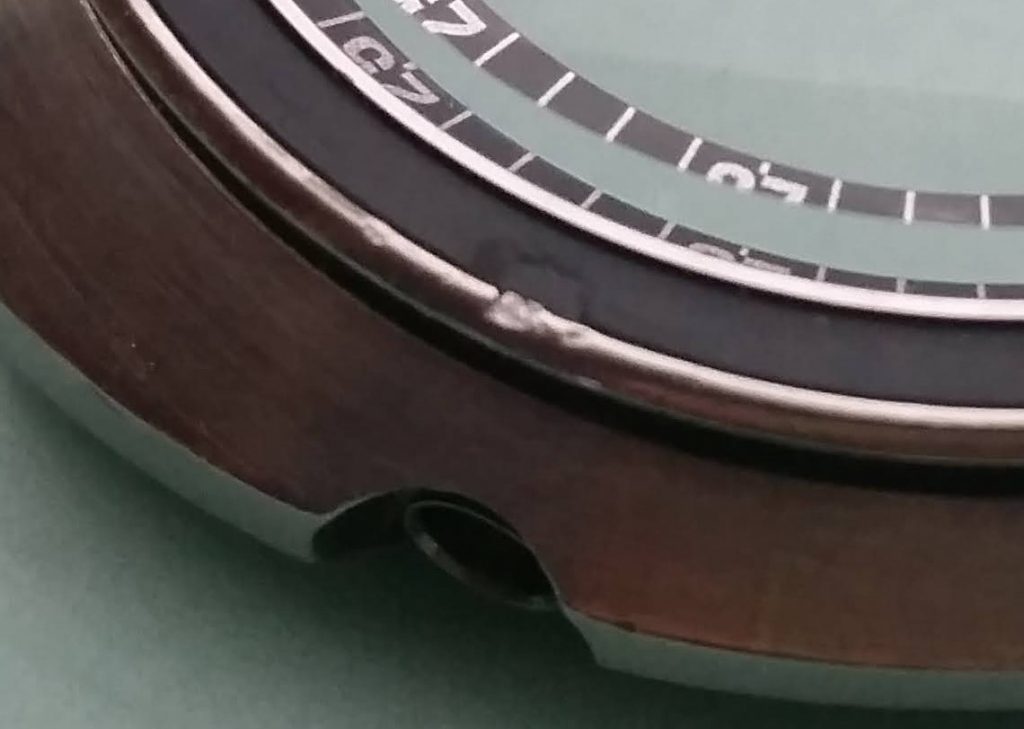
Feeling confident that the resulting timepiece would be worth the effort required to get the movementMovement A noun, referring to the whole of the inner workings of a watch. Not a great choice of word, in my opinion. back in good shape, I treated it to new old-stock crystalCrystal The clear glass on the front of a watch. to be shipped from Thailand.
This is a Proof\Proof model from April 1969 which I’m always pleased to see. Due to US regulations, SeikoSeiko A Japanese manufacturer of watches. switched their export, (and later their domestic) model descriptions to ‘WATER RESISTANT’ as the new decade turned, bolstering the rarity of the ‘WATERPROOF’ versions. And the 60s were cooler anyway.
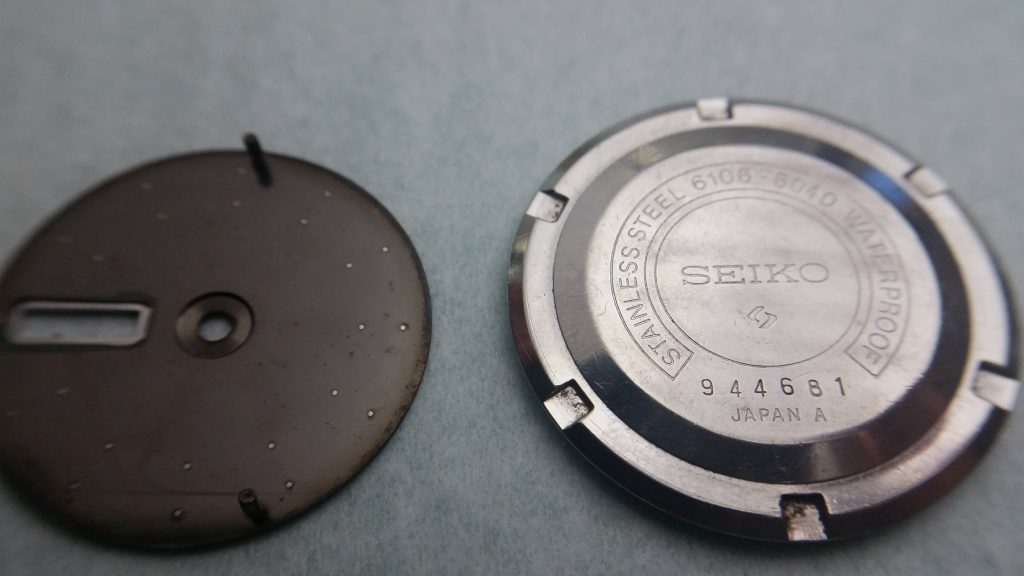
In this case, ‘WATERPROOF’ is a clear indication of 60s production, corroborated by the 6106B movementMovement A noun, referring to the whole of the inner workings of a watch. Not a great choice of word, in my opinion. inside.
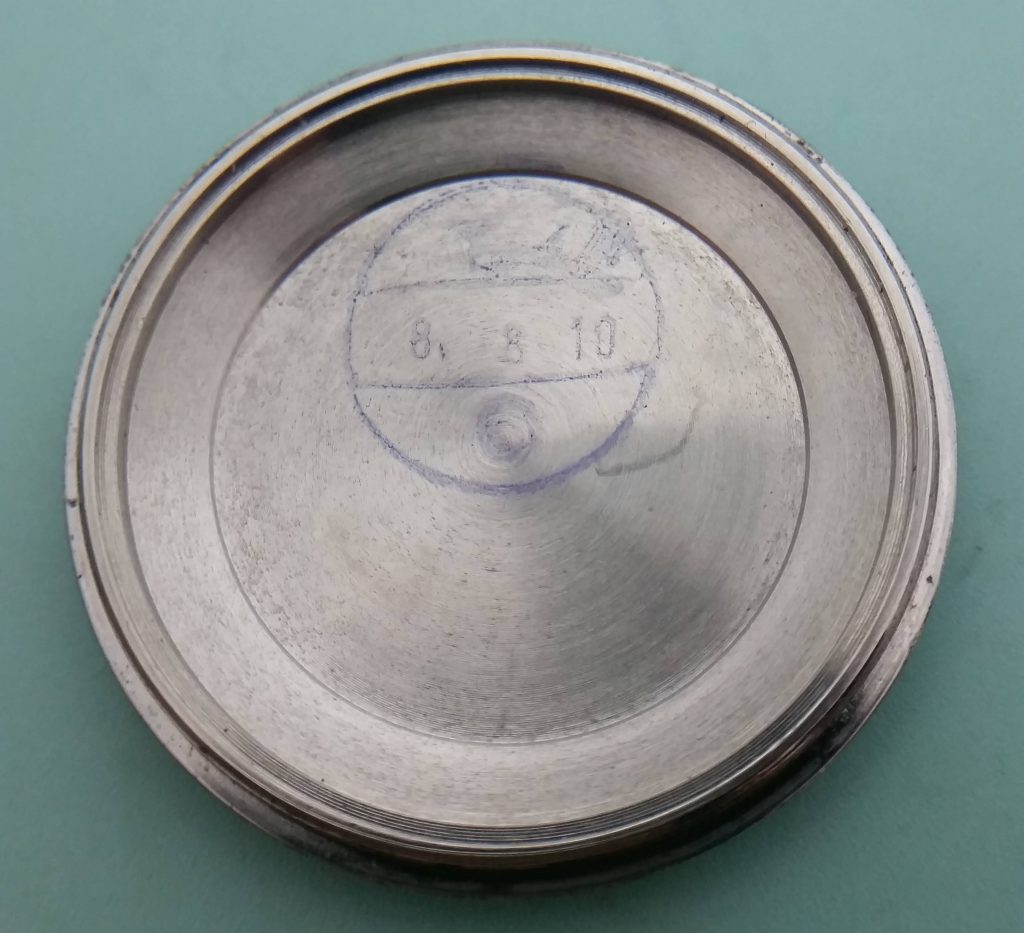
I was cheered to see this recent serviceService The watch is dismantled, cleaned, re-oiled and reassembled. Necessary for accurate timekeeping, and to prevent wearing of parts. mark, from an unknown, but likely Japanese, watchmakerWatchmaker The craft of repairing watches.
It's known as 'making' rather than 'repairing' as early artisans would buy the components separately and make new watches from scratch. That's all done in the factory now, but the name stuck.. Optimistically this refers to August 2010, but could possibly be August 2000, the 10th year of the Akihito era in the traditional Japanese calendar, still in occasional use despite being officially replaced by the western Gregorian calendar in 1873.
The MovementMovement A noun, referring to the whole of the inner workings of a watch. Not a great choice of word, in my opinion. Restoration: technical level 1 (click to skip)
Share this section:
The movementMovement A noun, referring to the whole of the inner workings of a watch. Not a great choice of word, in my opinion. stripdown was straightforward, suffice to say that along with the usual surplus of fiddly diafixDiafix Seiko's cap jewel retaining spring system. Have a reputation for being fiddly. cap jewelsCap jewel A bearing consisting of two jewels - one regular with a hole that surrounds the staff, and one cap-jewel the covers the tip. Oil is trapped between the two by capillary action., this 25 jeweledJewel Synthetic ruby insert that is used as a bearing. Low friction and resistance to wear. Usually purple. 6106B iteration includes a fixed cap jewelCap jewel A bearing consisting of two jewels - one regular with a hole that surrounds the staff, and one cap-jewel the covers the tip. Oil is trapped between the two by capillary action. over the calendar sideCalendar side The side of the movement that contains the day and date, and occasionally, month, year and phase of the moon, workings.
It is the side adjacent to the dial. palette forkPalette fork Contains two jewels the connect with the escape wheel locking its rotation. It periodically rocks back and forth allowing short bursts of motion. pivotPivot The tip of the staff (axle), usually rests within/upon a jewel.. I’m unsure as to the advantage of this design, but I can now vouch that a major disadvantage is that any pegwoodpegwood A very soft wood, usually the shape of a toothpick, that is used for cleaning away encrusted dirt without damaging the underlying brass. lodged in there during cleaning is exceedingly troublesome to remove. Given that this pivotPivot The tip of the staff (axle), usually rests within/upon a jewel. would not have been oiled upon the previous serviceService The watch is dismantled, cleaned, re-oiled and reassembled. Necessary for accurate timekeeping, and to prevent wearing of parts., it would probably have been safer to not have attempted to pegpegwood A very soft wood, usually the shape of a toothpick, that is used for cleaning away encrusted dirt without damaging the underlying brass. it clean at all.
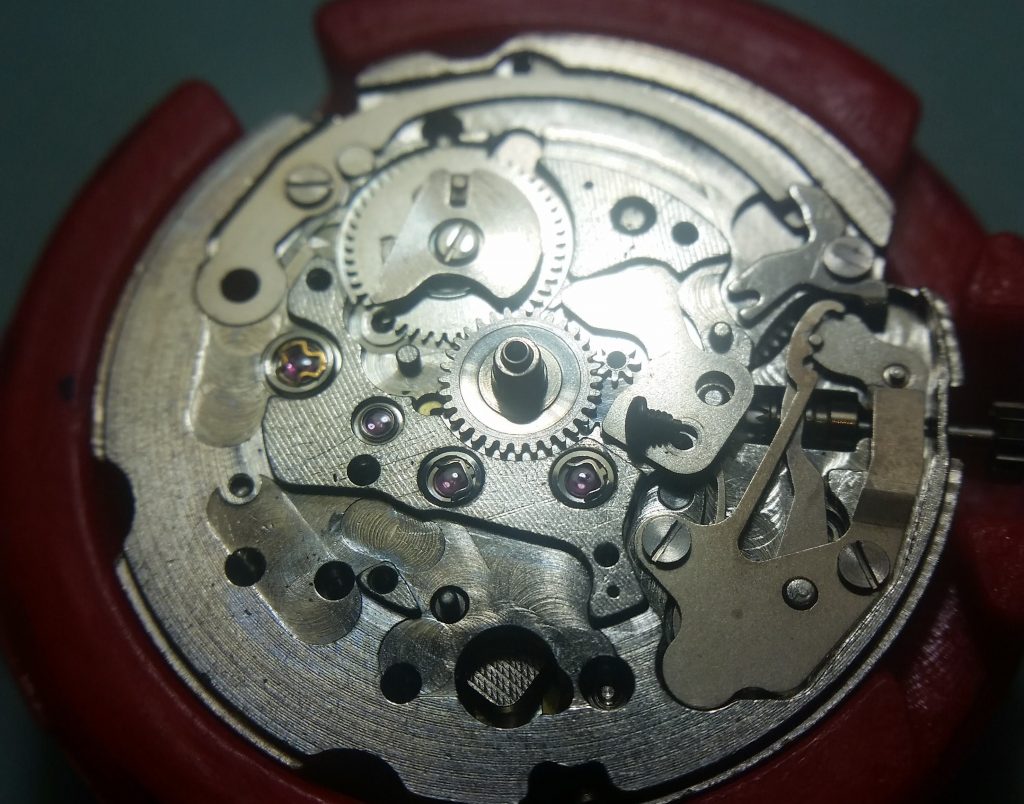
Meanwhile, on the trainTrain The sequence of wheels and pinions that transfer motion from the mainspring to the hands.
Barrel - center wheel - third wheel - fourth wheel. side, I had a surprise in store when attempting to remove the barrelBarrel Contains the mainspring, and acts as the first wheel in the train.
Barrel - center wheel - third wheel - fourth wheel - escape wheel.
One full rotation every 7 hours or so., as its cap remained stuck to the mainplateMainplate The chassis from with the movement is built, usually circular. Components are added to both sides to produce the finished movement. by sheer force of gunk. I consider myself fortunate that the mainspringMainspring A coiled up steel spring that provides the main power source of the watch. arborArbor Rotating shaft (axle), usually in reference to the mainspring barrel. didn’t seize this opportunity and make a bid for freedom after 10, or possibly 20, years of goop-encrusted constraint.
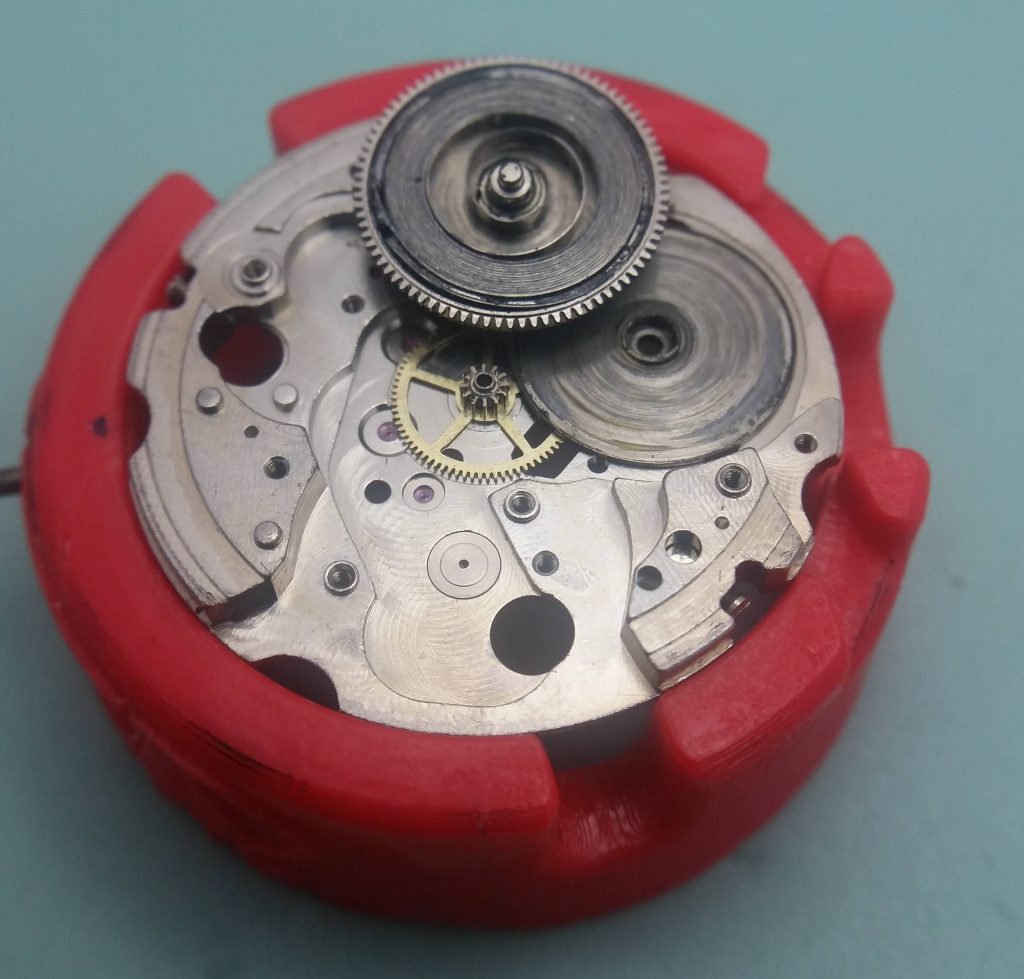
After cleaning and drying everything it’s time to undertake the rebuild. Before the fun stuff though, the cap jewelsCap jewel A bearing consisting of two jewels - one regular with a hole that surrounds the staff, and one cap-jewel the covers the tip. Oil is trapped between the two by capillary action. have to be re-installed, and on this model that means a pair of tricky diafixDiafix Seiko's cap jewel retaining spring system. Have a reputation for being fiddly. settings on the mainplateMainplate The chassis from with the movement is built, usually circular. Components are added to both sides to produce the finished movement., and two more on the trainTrain The sequence of wheels and pinions that transfer motion from the mainspring to the hands.
Barrel - center wheel - third wheel - fourth wheel. bridgeBridge A flat plate that secures other components in place. Usually screwed down with two or more screws. to be affixed later.
Then we can install the comparatively straightforward keyless worksKeyless works The collection of levers, springs, and pinions that allow the wearer to wind, adjust or stop the watch via the crown.
Clocks, and older watches, require a key to wind, hence the name of this improved system. which allow the stemstem Thin metal rod that transfers the user-adjustments of the crown into the heart of the movement., (now with spring!) to rotate the date, bezelBezel Circular ring surrounding, or just inside of, the crystal glass. Sometimes embossed with numbers and rotatable., hour hand, minute hand, or arrest the sweep secondSweep second The second hand that rotates in the main dial, as opposed to its own sub-dial. hand. The day has to be hand wound on these early models.
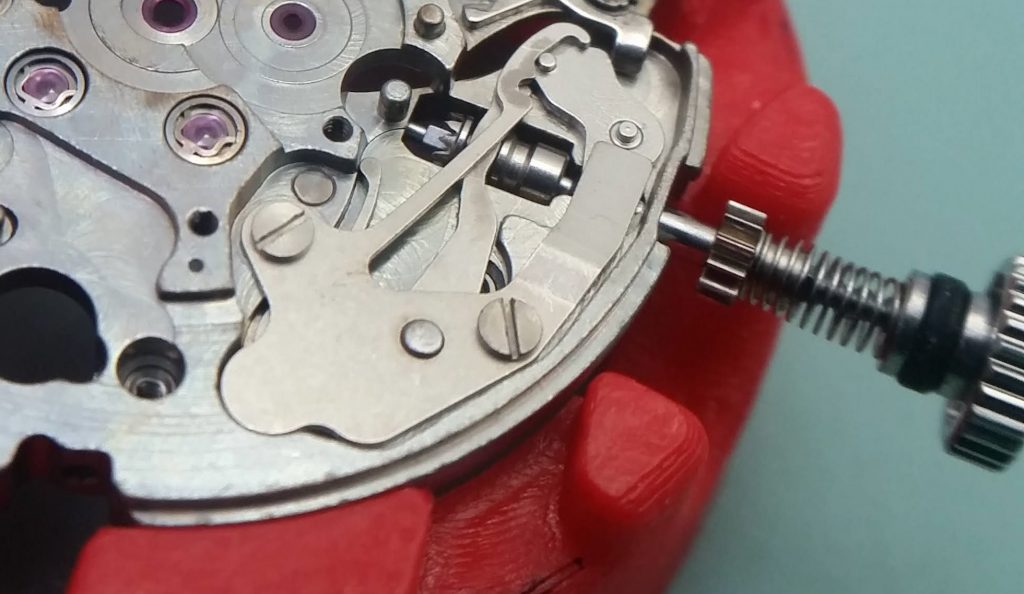
Clocks, and older watches, require a key to wind, hence the name of this improved system..
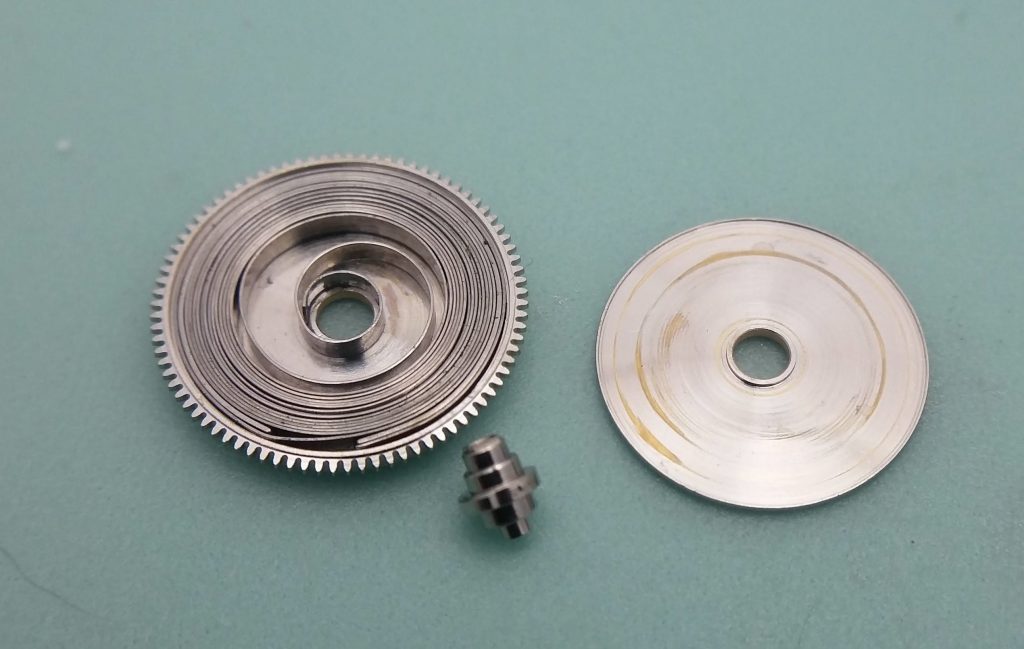
Flipping back over to the other side we can mount the entire trainTrain The sequence of wheels and pinions that transfer motion from the mainspring to the hands.
Barrel - center wheel - third wheel - fourth wheel.:
The silver-colored solid barrelBarrel Contains the mainspring, and acts as the first wheel in the train.
Barrel - center wheel - third wheel - fourth wheel - escape wheel.
One full rotation every 7 hours or so. (1) at top houses the mainspringMainspring A coiled up steel spring that provides the main power source of the watch. and rotates every 7 hours.
That drives the brass center wheelCenter wheel The second wheel in the power train.
Barrel - center wheel - third wheel - fourth wheel - escape wheel.
Takes its name from being in the center of the watch.
Connected to the minute hand, it completes one rotation every hour. (2) at the bottom, geared up to rotate every hour – thus the minute hand can be attached (indirectly) to it on the other side of the mainplateMainplate The chassis from with the movement is built, usually circular. Components are added to both sides to produce the finished movement., as we’ll see later.
That center wheelCenter wheel The second wheel in the power train.
Barrel - center wheel - third wheel - fourth wheel - escape wheel.
Takes its name from being in the center of the watch.
Connected to the minute hand, it completes one rotation every hour. also drives the brass third wheelThird Wheel Third in line of the geared power train:
Barrel - center wheel - third wheel - fourth wheel - escape wheel. (3) to the left, speeds vary by movementMovement A noun, referring to the whole of the inner workings of a watch. Not a great choice of word, in my opinion., but on this model it rotates every 6.4 minutes.
The third wheelThird Wheel Third in line of the geared power train:
Barrel - center wheel - third wheel - fourth wheel - escape wheel. drives – you guessed it – the fourth wheelFourth Wheel Fourth in line of the geared power train:
Barrel - center wheel - third wheel - fourth wheel - escape wheel.
Confusingly named - the second hand is usually driven by the fourth wheel.
One full turn every minute. (4), top center, rotating every 60 seconds – the second hand is connected directly to this wheelWheel Large cogs.’s pivotPivot The tip of the staff (axle), usually rests within/upon a jewel..
(If you’re wondering where the hour hand fits into all this, then we’ll return to that later).
The final wheelWheel Large cogs. of the trainTrain The sequence of wheels and pinions that transfer motion from the mainspring to the hands.
Barrel - center wheel - third wheel - fourth wheel. is the escape wheelEscape wheel A curiously shaped wheel whose rotation stops and starts, allowing tiny amounts of power to 'escape' from the mainspring at uniform intervals, thus driving the hands.
Barrel - center wheel - third wheel - fourth wheel - escape wheel.
Generally, the fastest fully rotating wheel in a watch, rotating every 5 seconds or so. (5) – it is the silver-colored spoked wheelWheel Large cogs. half obscured at the bottom – and rotates every 5 seconds – the fastest fully rotating wheelWheel Large cogs. in the watch. As an aside, the slowest rotating is the date dialDial The visible face of the watch., rotating once per month, over half a million times slower.
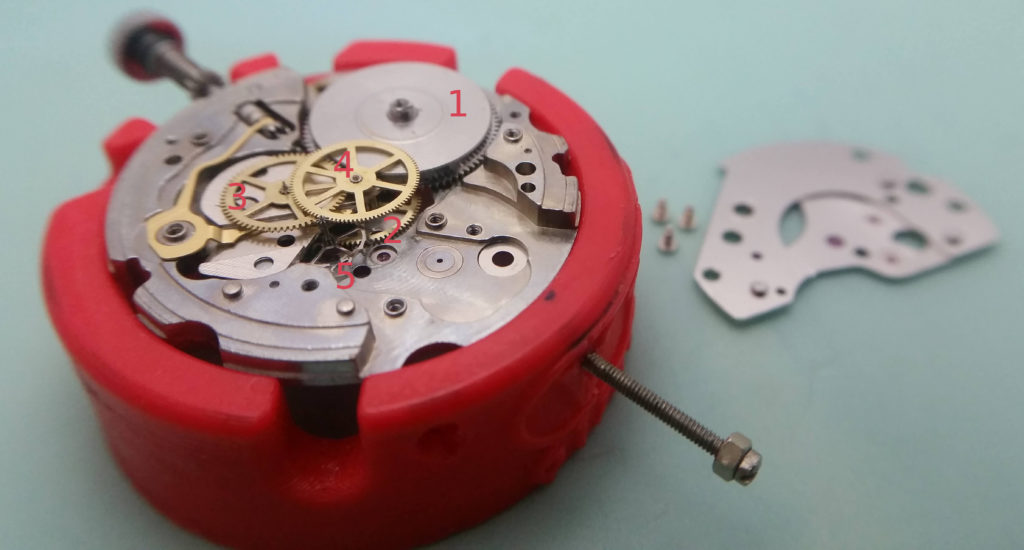
Barrel - center wheel - third wheel - fourth wheel..
The even-numbered wheelsWheel Large cogs. turn clockwise (when viewed from the other, dialDial The visible face of the watch., side),
and are directly attached to the minute and second hands.
The bridgeBridge A flat plate that secures other components in place. Usually screwed down with two or more screws. and its screws, in artful soft focus, await fitting.
What is that extra bolt in front-right for? – read on!
Also attached is the hacking leverHacking lever Internal component, usually long and thin, that effects the pulling out of the crown with the stopping the movement. – the curiously shaped slither of brass snaking from its activation by the crownCrown Small, decorative, external control used by the wearer to set time and calendars.
Usually at 3 o'clock., through it’s fulcrum on far left, and into the inner works where, when shifted slightly to the right, it crudely rubs against a moving part (the rim of the balance wheelBalance Wheel A spring driven flywheel that rotates back and forth, acting as a pendulun to regulate the timekeeping., not shown), bringing the whole trainTrain The sequence of wheels and pinions that transfer motion from the mainspring to the hands.
Barrel - center wheel - third wheel - fourth wheel. to a shuddering halt. Granted, it’s not the kind of elegant solution you’d associate with fine watchcraft, but simple is effective, and the watch will always recommence ticking when the friction is removed. In other movementsMovement A noun, referring to the whole of the inner workings of a watch. Not a great choice of word, in my opinion., the site of interference is higher up the gear trainTrain The sequence of wheels and pinions that transfer motion from the mainspring to the hands.
Barrel - center wheel - third wheel - fourth wheel., but this requires more friction, as the torqueTorque Rotational force is higher, and also results in the balance wheelBalance Wheel A spring driven flywheel that rotates back and forth, acting as a pendulun to regulate the timekeeping. coming to a sudden stop with the hairspringHairspring Spiral spring that rotates back and forth in the balance wheel, controlling the time keeping of the watch.
Not to be confused with the mainspring which stores the power. in an un-tensioned state, and thus less likely to restart when the setting lever’s friction is removed – sometimes it requires a little shake to restart the movementMovement A noun, referring to the whole of the inner workings of a watch. Not a great choice of word, in my opinion.. In this case, however, with the site of interference being the rim of the balance, it is likely to come to rest when it is moving slowest – at the end of an oscillationOscillation One swing of a pendulum. – where the hairspringHairspring Spiral spring that rotates back and forth in the balance wheel, controlling the time keeping of the watch.
Not to be confused with the mainspring which stores the power. is fully tensioned and primed to restart once the friction is removed.
Beat ErrorBeat Error A measure of lack of symmetry of a pendulum, usually measured in milliseconds. Basics: technical level 2 (click to skip)
Share this section:
At this point, I’d like to take a deep dive into an often over-simplified component of watch regulation, possibly at the expense of over-complexifying it.
So what does it mean to say that a watch is in beatBeat Error A measure of lack of symmetry of a pendulum, usually measured in milliseconds., and how is this different from being in-time, and are the two related?
It all comes down to the time intervals between the ticks and tocks of the movementMovement A noun, referring to the whole of the inner workings of a watch. Not a great choice of word, in my opinion.. These sounds are produced by the back and forth swinging of the pendulum (in a grandfather clock), or it’s more mobile substitute the balance wheelBalance Wheel A spring driven flywheel that rotates back and forth, acting as a pendulun to regulate the timekeeping.( in a small clock or watch), and form two distinct sounds due to the mechanism for ‘back’ being slightly different from ‘forth’. I’ll attempt to explain this through the medium of punctuation – for a movementMovement A noun, referring to the whole of the inner workings of a watch. Not a great choice of word, in my opinion. that is in-beat:
Tick . . . . . . Tock . . . . . . Tick . . . . . . Tock . . . . . . (in-beat)
Note the ticks and tocks are evenly spaced, with each tock coming exactly evenly between two ticks. Compare this with the second line where the movementMovement A noun, referring to the whole of the inner workings of a watch. Not a great choice of word, in my opinion. is out of beat:
Tick . . . . . . Tock . . . . . . Tick . . . . . . Tock . . . . . . Tick (in-beat)
Tick . . . . Tock . . . . . . . . Tick . . . . Tock . . . . . . . . Tick (out of beat)
Now that the tocks are no longer equidistant between ticks – there is a shorter time from tick to tock than from tock to tick – it is this difference that defines the lack of in-beatness – more commonly, (and eloquently), known as beat-errorBeat Error A measure of lack of symmetry of a pendulum, usually measured in milliseconds., usually measured in milliseconds.
The time between one tick and the next tick, (or one tock and the next tock if you’d rather), is known as the period, and it is this that defines the timekeeping of the movementMovement A noun, referring to the whole of the inner workings of a watch. Not a great choice of word, in my opinion., and is usually measured as the cumulative error over 24 hours, i.e. seconds / per day. Note that the distance between adjacent ticks is the same for both the examples above, so both will keep the same time.
For grandfather clocks a visual approximation of reducing beat errorBeat Error A measure of lack of symmetry of a pendulum, usually measured in milliseconds. can be made by ensuring that the clock is perfectly upright, as tilting to left or right will alter the symmetry of the pendulum’s arc, thus increasing its beat errorBeat Error A measure of lack of symmetry of a pendulum, usually measured in milliseconds..
An unusual feature of the SeikoSeiko A Japanese manufacturer of watches. 61 series movementsMovement A noun, referring to the whole of the inner workings of a watch. Not a great choice of word, in my opinion. is that the balance wheelBalance Wheel A spring driven flywheel that rotates back and forth, acting as a pendulun to regulate the timekeeping. has 4 spokes, (rather than the more usual 2 or 3). Due to the fact that the impulse jewelImpulse Jewel A single jewel on the balance wheel that interacts with the notch on the palette fork.
Most other jewels are arranged in pairs - this lone jewel is the reason that most movements have an odd jewel count. is situated directly under the hub end of one spoke it can be used as a convenient visual marker to easily align the movementMovement A noun, referring to the whole of the inner workings of a watch. Not a great choice of word, in my opinion. into approximate beat, without relying on one of those new-fangled timegraphers. I can only presume that watchmakers of old used a similar technique.
Prior to fitting the palette forkPalette fork Contains two jewels the connect with the escape wheel locking its rotation. It periodically rocks back and forth allowing short bursts of motion., the balance wheelBalance Wheel A spring driven flywheel that rotates back and forth, acting as a pendulun to regulate the timekeeping. when perturbed will swing back and forth in ever-decreasing arcs before finally coming to rest in its neutral positionPosition Usually refers to a specific orientation of the watch. Timekeeping is optimized in multiple positions (usually up to 6) in the hope that during everyday wear the watch will keep some average of all measurements.. To be in-beat this neutral positionPosition Usually refers to a specific orientation of the watch. Timekeeping is optimized in multiple positions (usually up to 6) in the hope that during everyday wear the watch will keep some average of all measurements. should leave the impulse jewelImpulse Jewel A single jewel on the balance wheel that interacts with the notch on the palette fork.
Most other jewels are arranged in pairs - this lone jewel is the reason that most movements have an odd jewel count. exactly midway between the notch of the palette fork. Now, if the palette forkPalette fork Contains two jewels the connect with the escape wheel locking its rotation. It periodically rocks back and forth allowing short bursts of motion. is symmetric, and for the SeikoSeiko A Japanese manufacturer of watches. 61 series, (along with the majority of movementsMovement A noun, referring to the whole of the inner workings of a watch. Not a great choice of word, in my opinion.), this is nominally the case, then the exposed pallet fork jewelJewel Synthetic ruby insert that is used as a bearing. Low friction and resistance to wear. Usually purple. in the mainplateMainplate The chassis from with the movement is built, usually circular. Components are added to both sides to produce the finished movement. can be used as a proxy for the palette forkPalette fork Contains two jewels the connect with the escape wheel locking its rotation. It periodically rocks back and forth allowing short bursts of motion.’s notch, ( recall that the palette forkPalette fork Contains two jewels the connect with the escape wheel locking its rotation. It periodically rocks back and forth allowing short bursts of motion. is removed to allow unencumbered rotation of balance wheelBalance Wheel A spring driven flywheel that rotates back and forth, acting as a pendulun to regulate the timekeeping. for this procedure). So by simply adjusting the studStud Metal connector at end of hairspring, allowing a connection to the balance cock. arm of the balance until the spoke that is adjacent to the impulse jewelImpulse Jewel A single jewel on the balance wheel that interacts with the notch on the palette fork.
Most other jewels are arranged in pairs - this lone jewel is the reason that most movements have an odd jewel count. comes to rest in its neutral positionPosition Usually refers to a specific orientation of the watch. Timekeeping is optimized in multiple positions (usually up to 6) in the hope that during everyday wear the watch will keep some average of all measurements. directly above the palette forkPalette fork Contains two jewels the connect with the escape wheel locking its rotation. It periodically rocks back and forth allowing short bursts of motion. jewelJewel Synthetic ruby insert that is used as a bearing. Low friction and resistance to wear. Usually purple. the balance will be brought into (theoretically) correct beat. A picture is worth a thousand words:

Most other jewels are arranged in pairs - this lone jewel is the reason that most movements have an odd jewel count. is directly over the pallet fork jewelJewel Synthetic ruby insert that is used as a bearing. Low friction and resistance to wear. Usually purple., producing theoretically perfect beat.
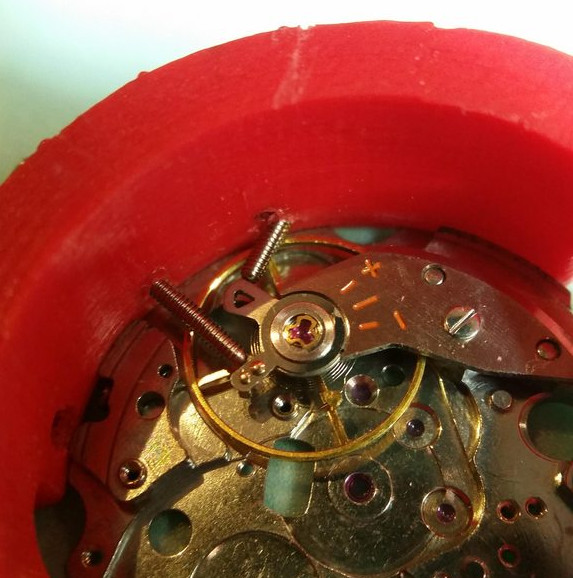
If you were wondering about that extra bolt in the side of my 3D printed movementMovement A noun, referring to the whole of the inner workings of a watch. Not a great choice of word, in my opinion. holder, I can now reveal that it is a remnant of an experiment in creating a holder-mounted micro-adjuster for rateRate Overall timekeeping accuracy of the watch - how much faster or slower than the correct time it is running. Usually measured in seconds per day. and beat tuning. A small rotation of a bolt results in the tiniest adjustment to the corresponding arm – just what is needed to really fine-tune the beat errorBeat Error A measure of lack of symmetry of a pendulum, usually measured in milliseconds..
It didn’t work out as effectively as this photo might imply, and I was constantly worried that a slip in the movementMovement A noun, referring to the whole of the inner workings of a watch. Not a great choice of word, in my opinion. would result in a catastrophic mangling of the balance.
But I left the lone bolt in place simply to serve as a handle!
Beat ErrorBeat Error A measure of lack of symmetry of a pendulum, usually measured in milliseconds. Deep Dive: technical level 3 (click to skip)
Share this section:
Most often very little thought is given to beat-errorBeat Error A measure of lack of symmetry of a pendulum, usually measured in milliseconds., it simply being reduced to the minimum value that the finesse of the movementMovement A noun, referring to the whole of the inner workings of a watch. Not a great choice of word, in my opinion., and the patience of the watchmakerWatchmaker The craft of repairing watches.
It's known as 'making' rather than 'repairing' as early artisans would buy the components separately and make new watches from scratch. That's all done in the factory now, but the name stuck., will allow. A value of 0.5 millisecs is oft-quoted as a guideline, and this is readily achievable for modern movementsMovement A noun, referring to the whole of the inner workings of a watch. Not a great choice of word, in my opinion.. While the numeric readout of the timegrapherTimegrapher Electronic device that listens to the ticking of a watch to determine if it's running well. is a suitable metric for this adjustment, it is often easier to just view the parallel trace lines and endeavor to unify them – a task made easier if the ticks are a different color to tocks and the view can be zoomed in to an extreme extent:

The scattering of points around their averages is most likely due to a slight eccentricity in the escape wheelEscape wheel A curiously shaped wheel whose rotation stops and starts, allowing tiny amounts of power to 'escape' from the mainspring at uniform intervals, thus driving the hands.
Barrel - center wheel - third wheel - fourth wheel - escape wheel.
Generally, the fastest fully rotating wheel in a watch, rotating every 5 seconds or so., which the vertical gray lines mark the period of.
Beat errorBeat Error A measure of lack of symmetry of a pendulum, usually measured in milliseconds. reduction is normally undertaken in the dialDial The visible face of the watch.-down positionPosition Usually refers to a specific orientation of the watch. Timekeeping is optimized in multiple positions (usually up to 6) in the hope that during everyday wear the watch will keep some average of all measurements., ( which gives easy access to the balance’s studStud Metal connector at end of hairspring, allowing a connection to the balance cock. arm, or in the unfortunate situation that the watch has no movable studStud Metal connector at end of hairspring, allowing a connection to the balance cock., the hairspringHairspring Spiral spring that rotates back and forth in the balance wheel, controlling the time keeping of the watch.
Not to be confused with the mainspring which stores the power.’s colletCollet Soft brass ring that friction fits onto a staff (axle), i.e. at the center terminal of a hairspring. ), but let’s get over-obsessive and measure the beat-errorBeat Error A measure of lack of symmetry of a pendulum, usually measured in milliseconds. in all positionsPosition Usually refers to a specific orientation of the watch. Timekeeping is optimized in multiple positions (usually up to 6) in the hope that during everyday wear the watch will keep some average of all measurements. (with a few extra verticals positionsPosition Usually refers to a specific orientation of the watch. Timekeeping is optimized in multiple positions (usually up to 6) in the hope that during everyday wear the watch will keep some average of all measurements. for good measure)! While both dialDial The visible face of the watch.-up and dialDial The visible face of the watch.-down are within tolerance, the beat errorBeat Error A measure of lack of symmetry of a pendulum, usually measured in milliseconds. as the watch is rotated through vertical positionsvertical positions When the watch is upright. shows a distinctly uneven response.

The red line shows the ideal (ie zero) beat errorBeat Error A measure of lack of symmetry of a pendulum, usually measured in milliseconds..
New readings, (in cyan) from adjusting the studStud Metal connector at end of hairspring, allowing a connection to the balance cock. arm just a little, produce a worrying divergence in the horizontal positionsPosition Usually refers to a specific orientation of the watch. Timekeeping is optimized in multiple positions (usually up to 6) in the hope that during everyday wear the watch will keep some average of all measurements., while the vertical positionsvertical positions When the watch is upright. change in a haphazard fashion – reduced in some positionsPosition Usually refers to a specific orientation of the watch. Timekeeping is optimized in multiple positions (usually up to 6) in the hope that during everyday wear the watch will keep some average of all measurements. but raised in others – it’s horologicalHorology The study of timekeeping. whack-a-mole!

If the studStud Metal connector at end of hairspring, allowing a connection to the balance cock. arm is moved even further out of beat though, the new purple line’s vertical readings take on a regular sinusoidalSinusoidal of a pure wave. form, and the cause of our previous confusion becomes evident.

Beat errors are traditionally measured without regard to sign, that is -0.5 millisecs registers the same value as +0.5 millisecs, and it is this wanton disregard for statistical fidelity that caused our previous confusion. If we plot the very same data as full (i.e with signs) values, we get pleasing curves that simply move up and down the chart as the studStud Metal connector at end of hairspring, allowing a connection to the balance cock. arm is adjusted.

Another compelling bonus of my no doubt quixoticQuixotic Likened to the fanciful notions of Don Quixote, i.e. sadly never going to happen. quest to overturn centuries of horologicalHorology The study of timekeeping. tradition by introducing the sign of beat errors is that, (with a minor caveat), it allows the very same inscriptions of ‘+’ and ‘-‘, that are engraved on the movementMovement A noun, referring to the whole of the inner workings of a watch. Not a great choice of word, in my opinion. to advance or retard the timekeeping, to also serve for tuning out the beat errorBeat Error A measure of lack of symmetry of a pendulum, usually measured in milliseconds.. If the beat errorBeat Error A measure of lack of symmetry of a pendulum, usually measured in milliseconds. is positive, rotate the studStud Metal connector at end of hairspring, allowing a connection to the balance cock. towards negative, if the beat errorBeat Error A measure of lack of symmetry of a pendulum, usually measured in milliseconds. is negative, rotate the studStud Metal connector at end of hairspring, allowing a connection to the balance cock. towards positive. Unfortunately, that minor caveat is actually rather major, in that the timegrapherTimegrapher Electronic device that listens to the ticking of a watch to determine if it's running well. has no idea which are ticks and which are tocks so it just guesses the initial sign, but from there on the beat errorBeat Error A measure of lack of symmetry of a pendulum, usually measured in milliseconds. sign will remain coherent provided studStud Metal connector at end of hairspring, allowing a connection to the balance cock. arm adjustments do not bring the movementMovement A noun, referring to the whole of the inner workings of a watch. Not a great choice of word, in my opinion. to a halt.
But that still leaves the vexing question of what causes the beat errorBeat Error A measure of lack of symmetry of a pendulum, usually measured in milliseconds.’s sinusoidalSinusoidal of a pure wave. response to vertical positioning?

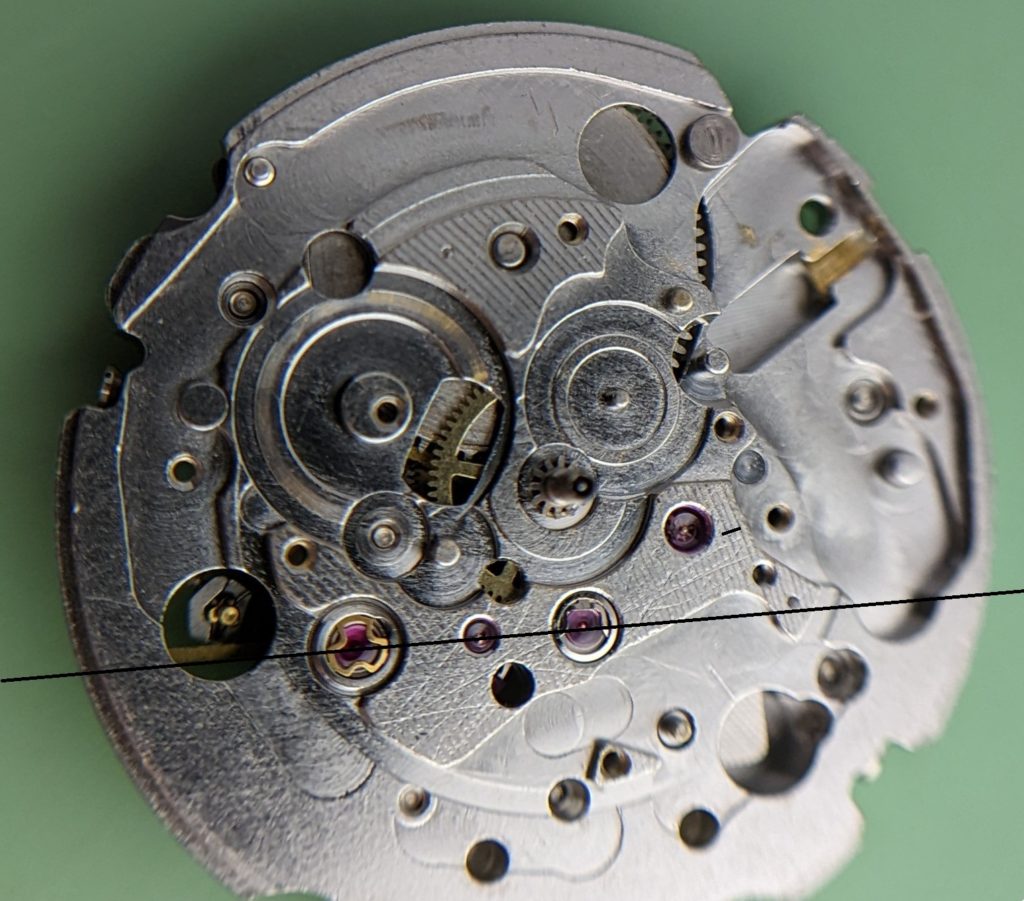
A big clue to the likely cause is revealed when the mainplateMainplate The chassis from with the movement is built, usually circular. Components are added to both sides to produce the finished movement. is rotated to the vertical positionsvertical positions When the watch is upright. that result in the maximum (or minimum) beat errorBeat Error A measure of lack of symmetry of a pendulum, usually measured in milliseconds., whereupon it is noticed that the palette forkPalette fork Contains two jewels the connect with the escape wheel locking its rotation. It periodically rocks back and forth allowing short bursts of motion. is approximately horizontal in both cases – the black line passes through the balance and palette pivots.
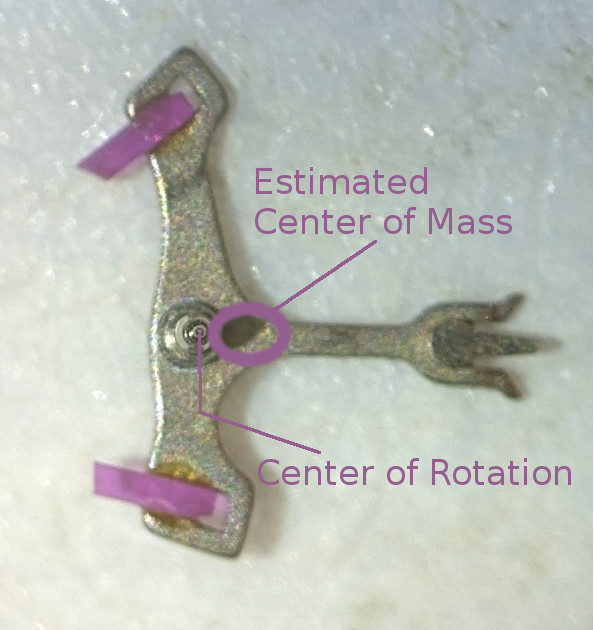
I suspect that it is a lack of poisePoise To be uniformly balanced and even. in the palette forkPalette fork Contains two jewels the connect with the escape wheel locking its rotation. It periodically rocks back and forth allowing short bursts of motion. that produces these changes, by which I mean that the center of mass is not co-axial with the center of rotation.
That’s just a fancy way of saying what every parent already knows – when two children want to play together on a see-saw (teeter-totter) the parent has to go to the end with the lighter child ( the palette jewelsJewel Synthetic ruby insert that is used as a bearing. Low friction and resistance to wear. Usually purple. end of the palette forkPalette fork Contains two jewels the connect with the escape wheel locking its rotation. It periodically rocks back and forth allowing short bursts of motion.) and push down to help counter the weight of the heavier child ( the notch end ). Then to reverse, they have to hinder the rising of the see-saw lest their younger gets catapulted off by the downforce of their elder! And so it is (hopefully to a lesser degree) with the horizontal palette forkPalette fork Contains two jewels the connect with the escape wheel locking its rotation. It periodically rocks back and forth allowing short bursts of motion. – on one balance wheelBalance Wheel A spring driven flywheel that rotates back and forth, acting as a pendulun to regulate the timekeeping. direction the motion of the fork transiting is aided by the additional gravitational force of the heavier notch end, while on the subsequent cycle the motion is hindered by that same gravitational force. Clearly, the first case will impart a larger force back to the balance wheelBalance Wheel A spring driven flywheel that rotates back and forth, acting as a pendulun to regulate the timekeeping., while the second case will impart a lesser force – it is this imbalance that causes the beat errorBeat Error A measure of lack of symmetry of a pendulum, usually measured in milliseconds.. When the movementMovement A noun, referring to the whole of the inner workings of a watch. Not a great choice of word, in my opinion. is rotated 6 hours (180°) the palette forkPalette fork Contains two jewels the connect with the escape wheel locking its rotation. It periodically rocks back and forth allowing short bursts of motion. is again horizontal, only this time in the opposite direction, hence the direction of the beat errorBeat Error A measure of lack of symmetry of a pendulum, usually measured in milliseconds. is reversed. When the movementMovement A noun, referring to the whole of the inner workings of a watch. Not a great choice of word, in my opinion. is rotated either ±90° the palette forkPalette fork Contains two jewels the connect with the escape wheel locking its rotation. It periodically rocks back and forth allowing short bursts of motion. is entirely vertical, ( as it also is in horizontal positionshorizontal positions When the watch is dial up (DU) or dial down (DD).), and with no gravitational imbalance there is (nearly) no beat errorBeat Error A measure of lack of symmetry of a pendulum, usually measured in milliseconds..
So what can be done about this? Well, to labor our playground analogy, the heavier kid can sit nearer the middle of the see-saw, ( or move the see-saw’s pivotPivot The tip of the staff (axle), usually rests within/upon a jewel. towards him) – sadly this won’t work on a palette forkPalette fork Contains two jewels the connect with the escape wheel locking its rotation. It periodically rocks back and forth allowing short bursts of motion. as the positioning, and arc of movementMovement A noun, referring to the whole of the inner workings of a watch. Not a great choice of word, in my opinion., of the jewelsJewel Synthetic ruby insert that is used as a bearing. Low friction and resistance to wear. Usually purple. is critical. How about we weigh down the lighter kid with a lead-lined jacket, (don’t try this at the water park)? Weighting the jewelsJewel Synthetic ruby insert that is used as a bearing. Low friction and resistance to wear. Usually purple.’ end has been tried on palette forks to bring them into perfect poisePoise To be uniformly balanced and even., but with the most unwelcome side effect of reducing the amplitudeAmplitude A measure of how far the balance wheel is rotating each swing.
Analogous to how wide a pendulum is swinging.
Measured in degrees, with higher being better (up to around 330 degrees) in all positionsPosition Usually refers to a specific orientation of the watch. Timekeeping is optimized in multiple positions (usually up to 6) in the hope that during everyday wear the watch will keep some average of all measurements. due to the added inertia required to move an overall heavier part. Sorry to say we’ll have to just learn to live with it.
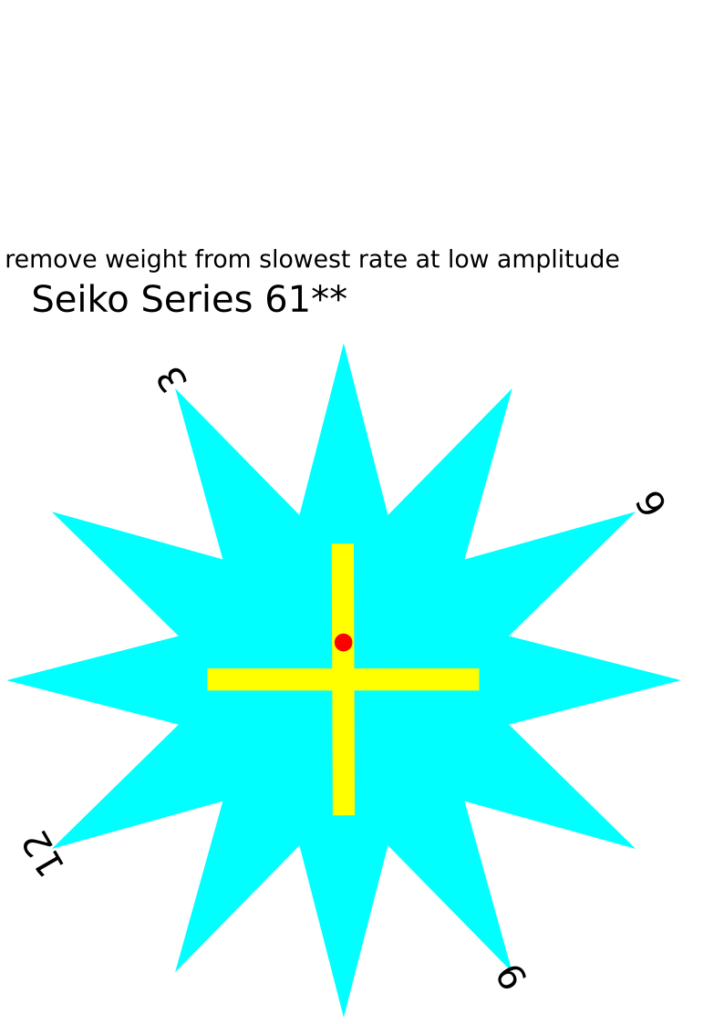
Before ending this obsessive timegraphing section, I’ll just note that I’ve done a deep dive on dynamic poising in a previous post, so I won’t repeat it here, suffice to add that due to the low amplitudeAmplitude A measure of how far the balance wheel is rotating each swing.
Analogous to how wide a pendulum is swinging.
Measured in degrees, with higher being better (up to around 330 degrees) inherent in vintage 6 series movementsMovement A noun, referring to the whole of the inner workings of a watch. Not a great choice of word, in my opinion., the balance was temporarily transferred to a scrap movementMovement A noun, referring to the whole of the inner workings of a watch. Not a great choice of word, in my opinion. I reserve for just such duties, that has an overly powerful mainspringMainspring A coiled up steel spring that provides the main power source of the watch. – easily capable of vertical amplitudesAmplitude A measure of how far the balance wheel is rotating each swing.
Analogous to how wide a pendulum is swinging.
Measured in degrees, with higher being better (up to around 330 degrees) in excess of 280.
Here is the poisingPoise To be uniformly balanced and even. chart for this movementMovement A noun, referring to the whole of the inner workings of a watch. Not a great choice of word, in my opinion. series.
On the motion side of the movementMovement A noun, referring to the whole of the inner workings of a watch. Not a great choice of word, in my opinion. the trainTrain The sequence of wheels and pinions that transfer motion from the mainspring to the hands.
Barrel - center wheel - third wheel - fourth wheel. continues. Mostly hidden from view, the cannon pinionCannon pinion A critical part that connects together the working parts on both sides of the main plate. Often, the minute hand is connected directly to it. It's carefully designed to be able to slip when the wearer adjusts the time, so as to isolate all the ticking parts. (1) is friction fitted onto the center wheelCenter wheel The second wheel in the power train.
Barrel - center wheel - third wheel - fourth wheel - escape wheel.
Takes its name from being in the center of the watch.
Connected to the minute hand, it completes one rotation every hour. we fitted on the previous side (rotating hourly). This drives the minute wheelWheel Large cogs. (2), which immediately doubles back to drive the hour wheelWheel Large cogs. (3) sitting directly over the aforementioned cannon pinionCannon pinion A critical part that connects together the working parts on both sides of the main plate. Often, the minute hand is connected directly to it. It's carefully designed to be able to slip when the wearer adjusts the time, so as to isolate all the ticking parts.. As promised previously, this arrangement reduces the rotation by a factor of 12 – hence the hour hand, attached to this hour wheelWheel Large cogs., rotates twice a day.
Just visible in the center is the blurry tip of the fourth wheelFourth Wheel Fourth in line of the geared power train:
Barrel - center wheel - third wheel - fourth wheel - escape wheel.
Confusingly named - the second hand is usually driven by the fourth wheel.
One full turn every minute. to which the second hand will be attached, rotating once per minute.
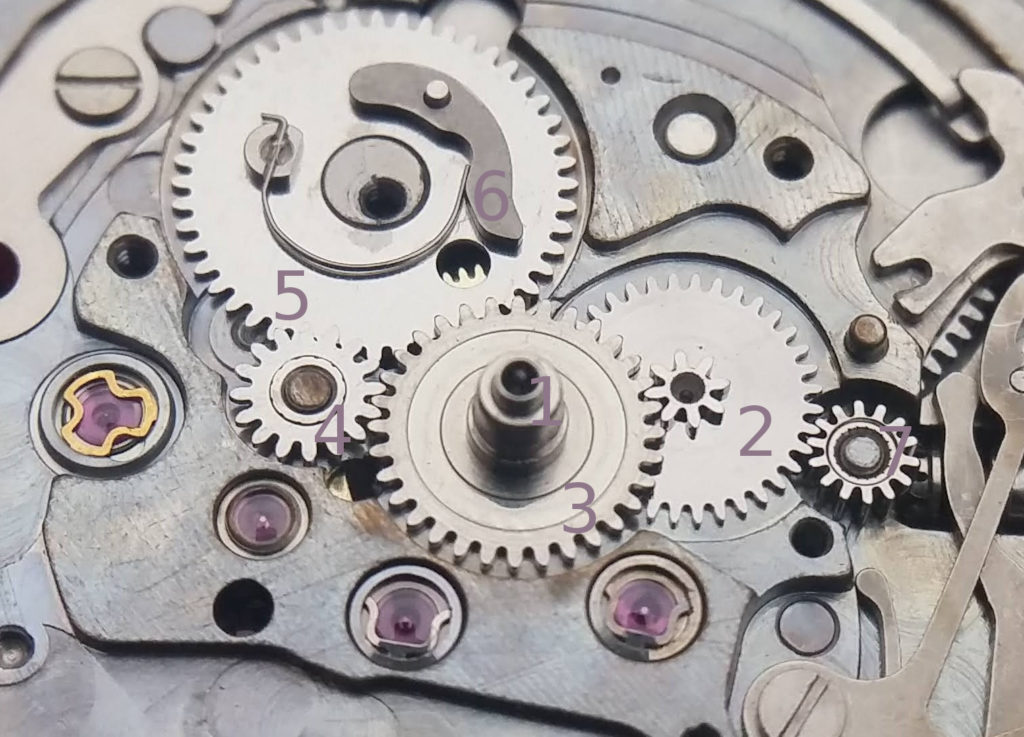
The small pinionPinion A small cog - the teeth are referred to as leaves. to the left (4) reduces the rotation rateRate Overall timekeeping accuracy of the watch - how much faster or slower than the correct time it is running. Usually measured in seconds per day. further, so that the large wheelWheel Large cogs. at top (5) rotates once a day, with the spring-loaded dark fingerFinger A cog with, in effect, just one tooth.(6) advancing the date dialDial The visible face of the watch. by one day for each rotation, (the spring prevents damage should the user inadvertently attempt to manually advance the day/date simultaneously with this daily mechanical advance).
Meanwhile, the small pinionPinion A small cog - the teeth are referred to as leaves.(7) to the very right spins freely the whole time, except when manually adjusting the time, whereupon it is engaged with the clutch’s teeth, half-hidden at a lower level, far right.
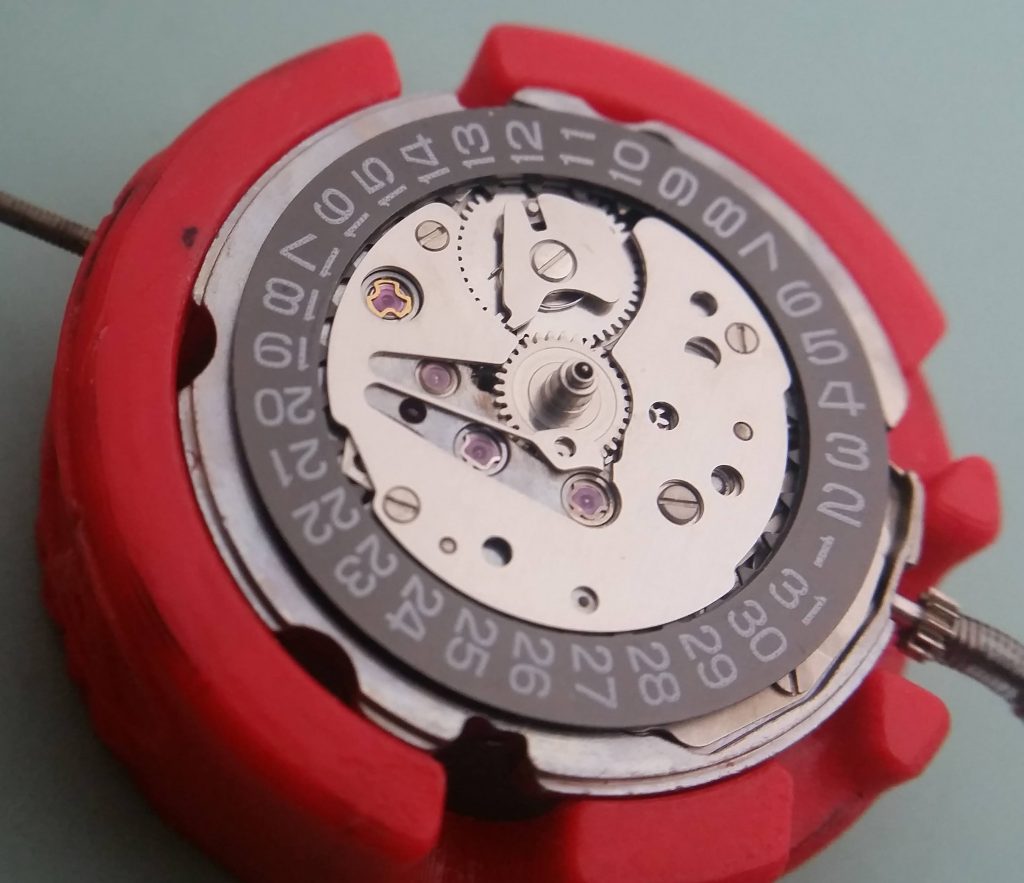
Barrel - center wheel - third wheel - fourth wheel - escape wheel.
Generally, the fastest fully rotating wheel in a watch, rotating every 5 seconds or so.!
The strangely shaped rotating fingerFinger A cog with, in effect, just one tooth. towards the top advances the day diskDay wheel A rotating disk, printed with the days of the week, one of which is visible thru a window on the dial. (not yet fitted).
And so with the day wheelDay wheel A rotating disk, printed with the days of the week, one of which is visible thru a window on the dial., dialDial The visible face of the watch., and hands returned we have our movementMovement A noun, referring to the whole of the inner workings of a watch. Not a great choice of word, in my opinion. sitting prettily on a casing cushion awaiting the case restoration.
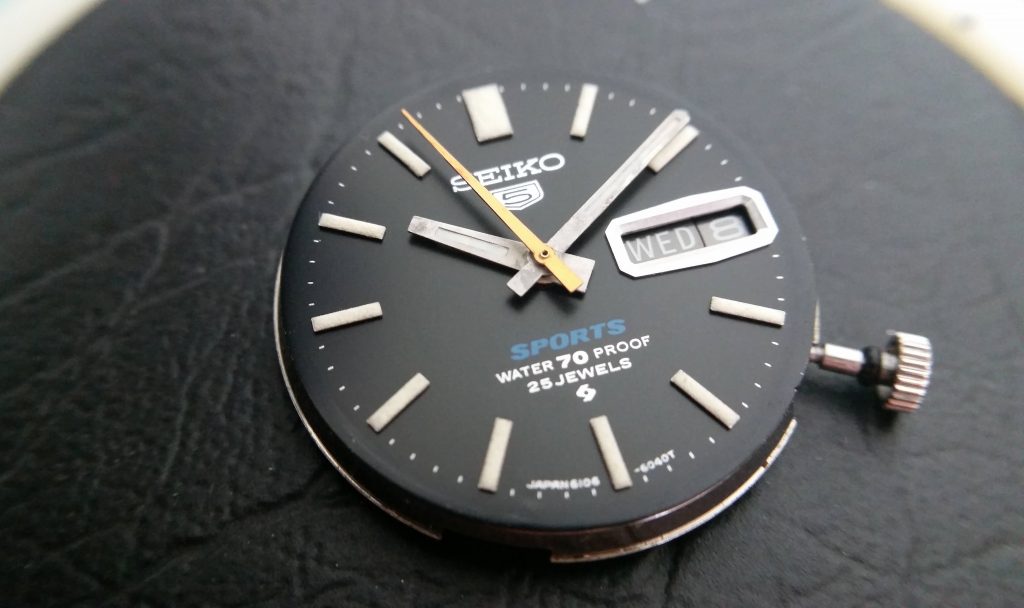
The crystalCrystal The clear glass on the front of a watch. arrived and is fitted in the cleaned, but not polished, case.
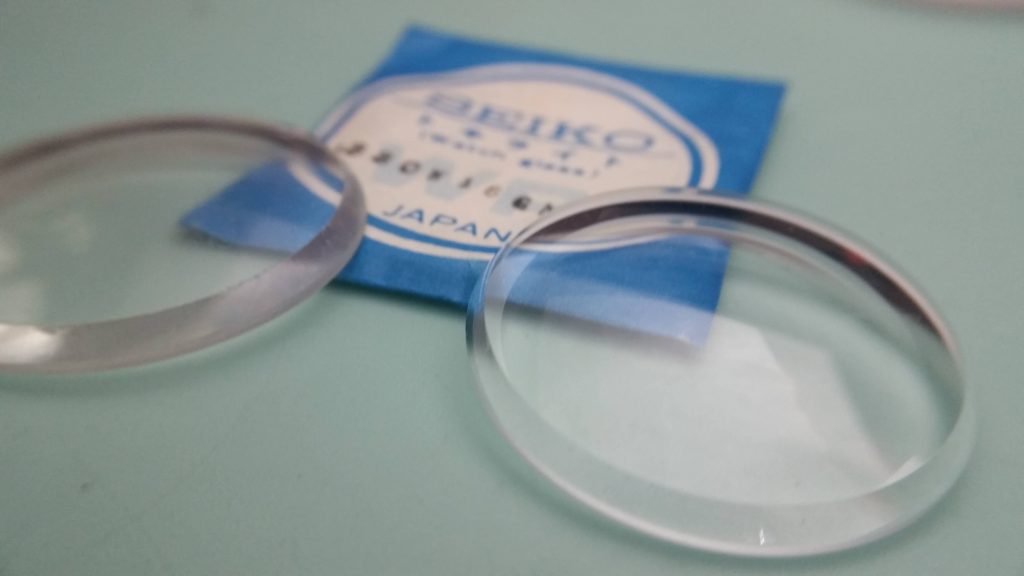
Genuine crystals for the more commonplace 32mm models are getting very hard to find.
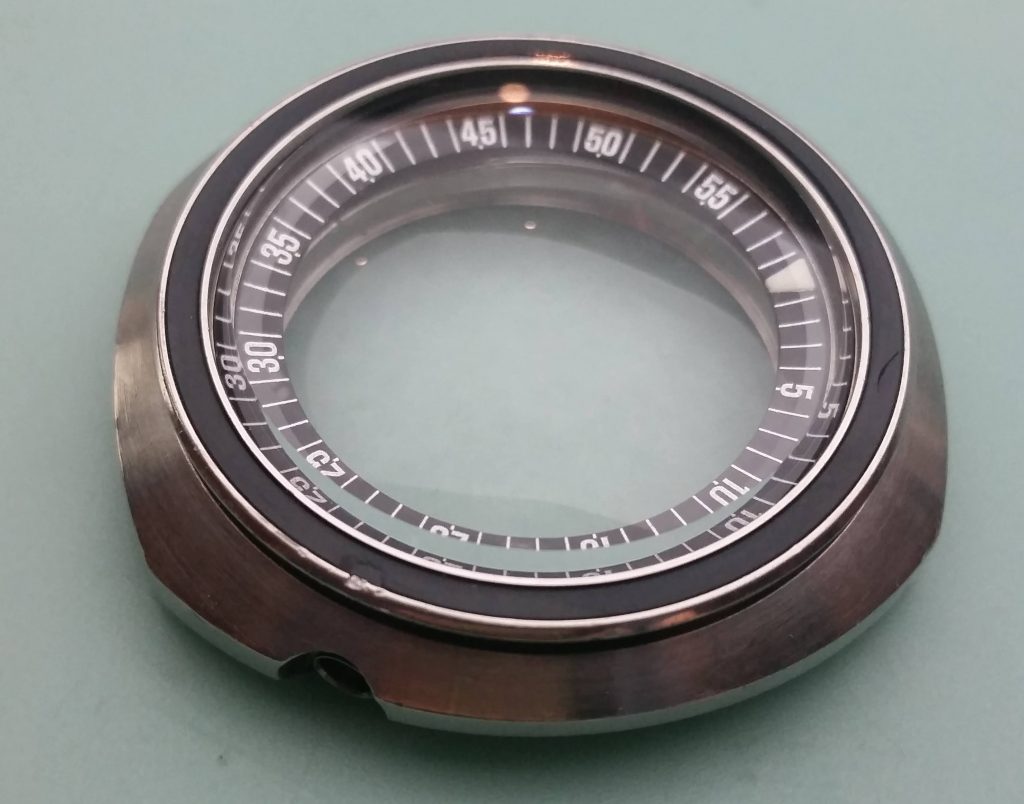
Usually at 3 o'clock..

Usually at 3 o'clock. gasketGasket Rubber seal, usually clamped tight, that prevents moisture and dirt from entering the watch..
Enterprising souls have reproduced these gasketsGasket Rubber seal, usually clamped tight, that prevents moisture and dirt from entering the watch. (in lurid colors) and they fetch a handsome price on Ebay.
The movementMovement A noun, referring to the whole of the inner workings of a watch. Not a great choice of word, in my opinion., complete with automatic works is placed inside, awaiting rotorRotor A weighted pendulum that moves as the user swings their arm, causing the mainspring to be wound on an automatic watch.:
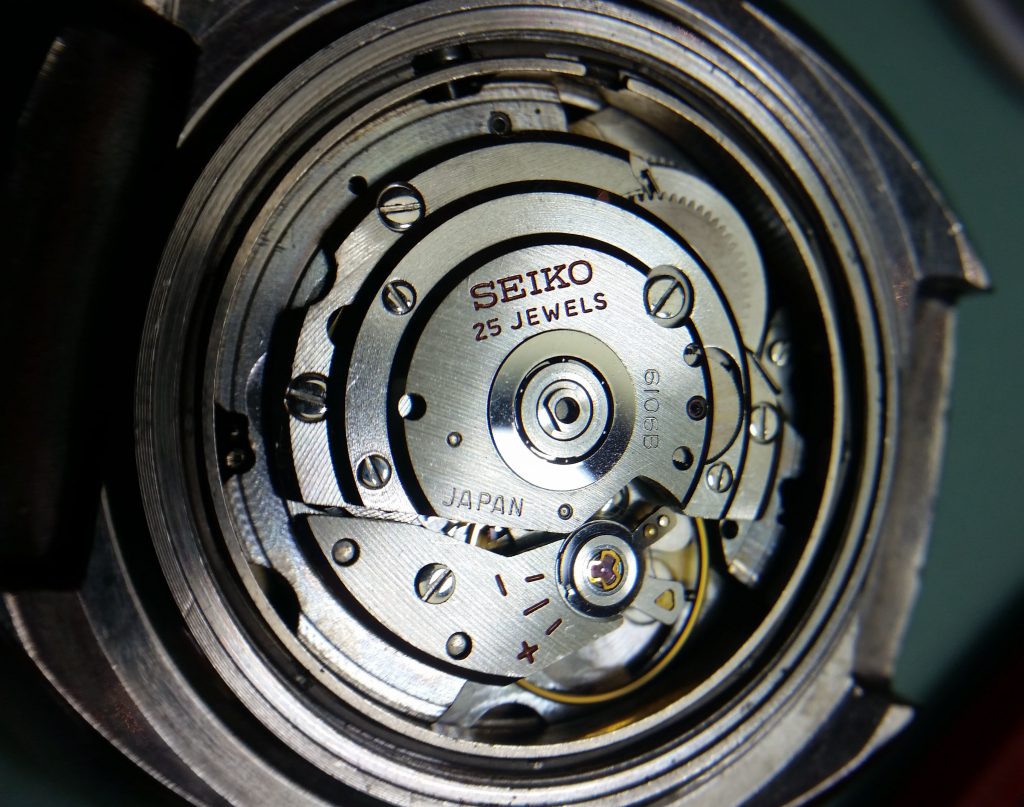
And so, with period-correct SeikoSeiko A Japanese manufacturer of watches. braceletBracelet Metal band/strap to secure a watch around the wrist. attached the restoration is complete.
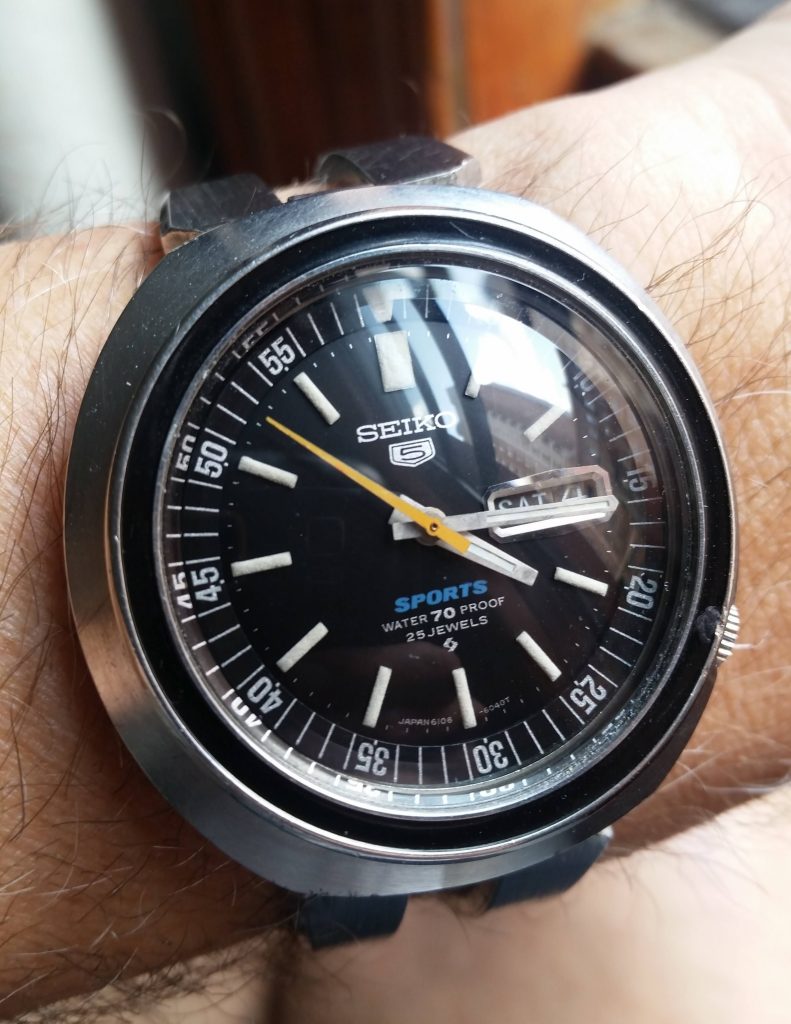
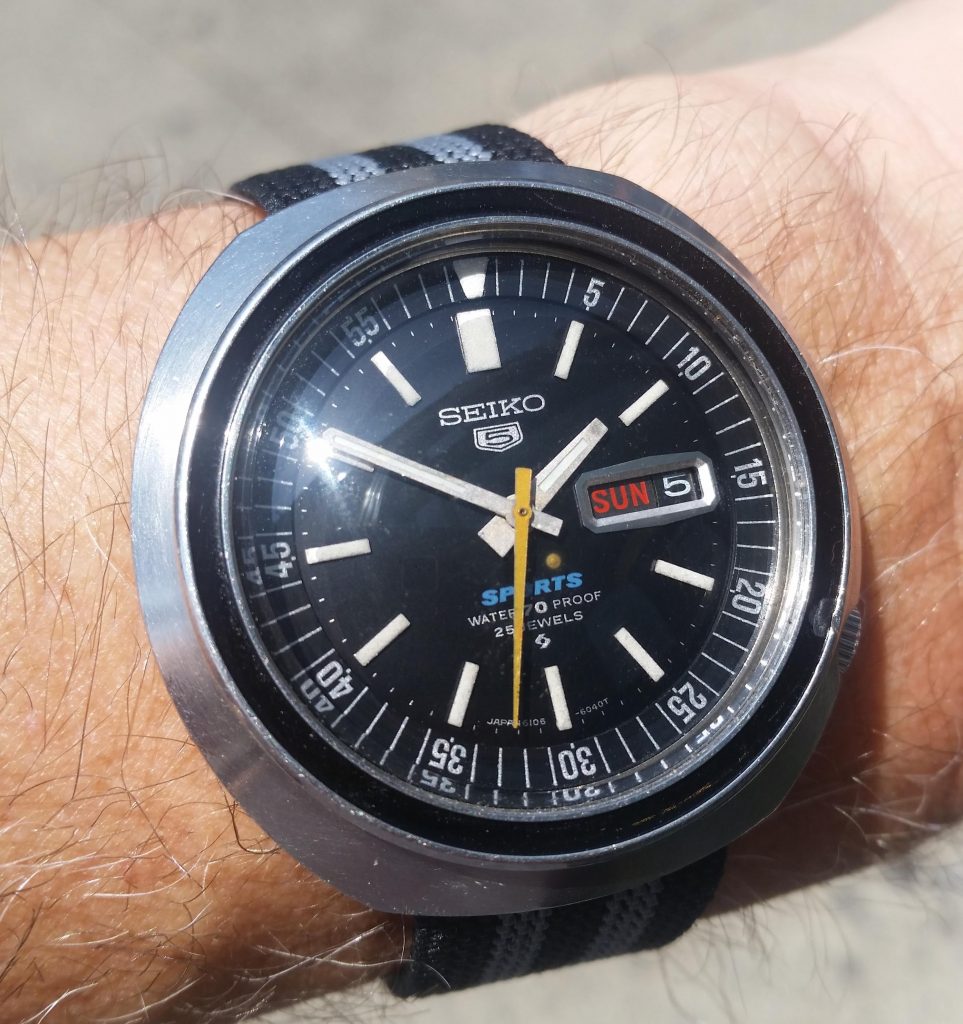
After a few rounds of fine-tuning the regulation to actual wear, I’ll settle for these stats:
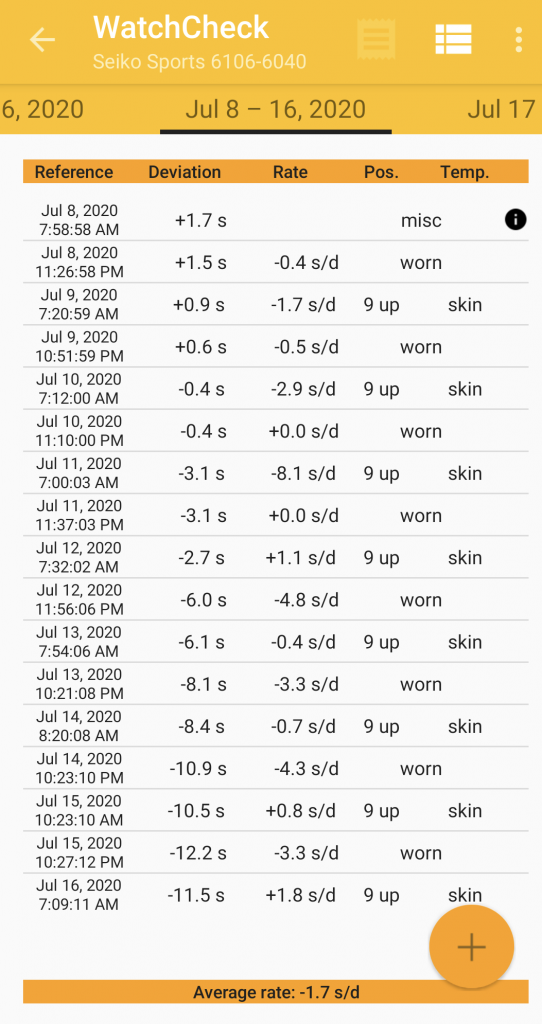
Usually at 3 o'clock.-down overnight the timekeeping was pleasingly accurate over these 8 days of daily wear.
I’d rather 1.7/day fast, but I’ve learned from experience when to call it a day with regulating.
Actually, that’s not true, I still obsess over it!
And so this charming SeikoSeiko A Japanese manufacturer of watches. ‘Sports Diver’ takes up residence on my wrist, whereupon it shall be removed for anything more aquatically challenging than hand washing!
Copyright © 2022 HorologyHorology The study of timekeeping. Obsession. All rights reserved.


